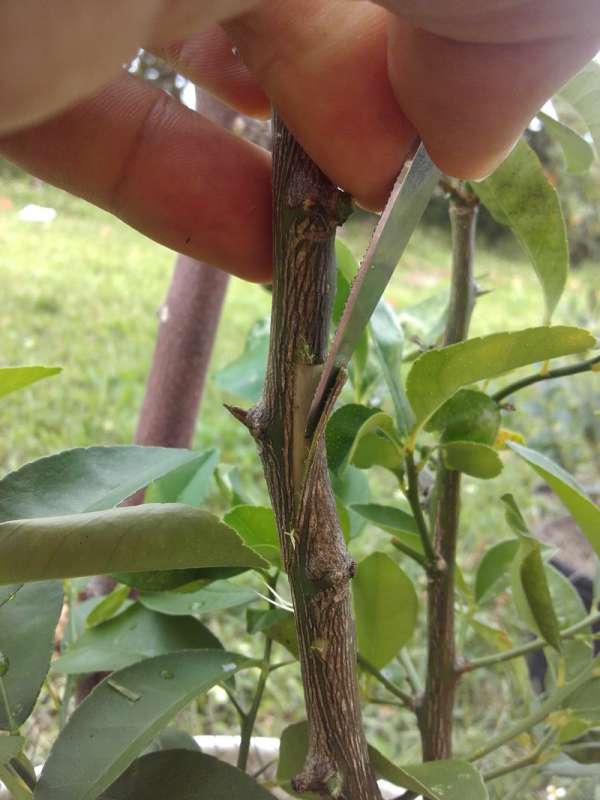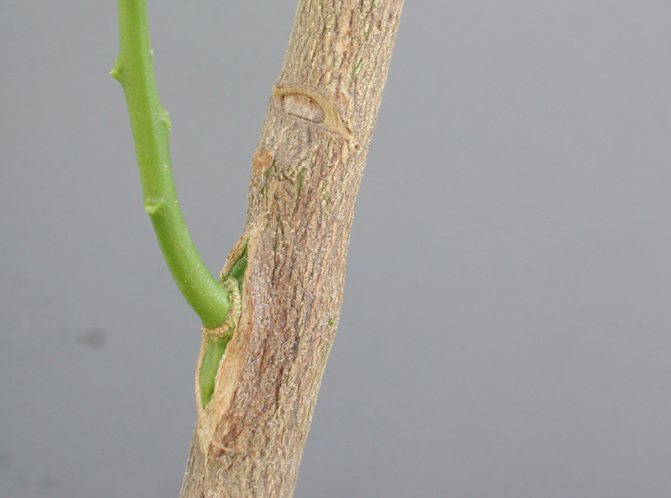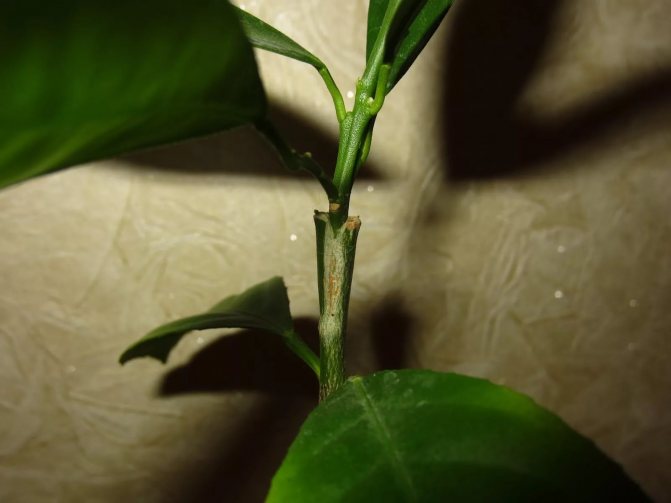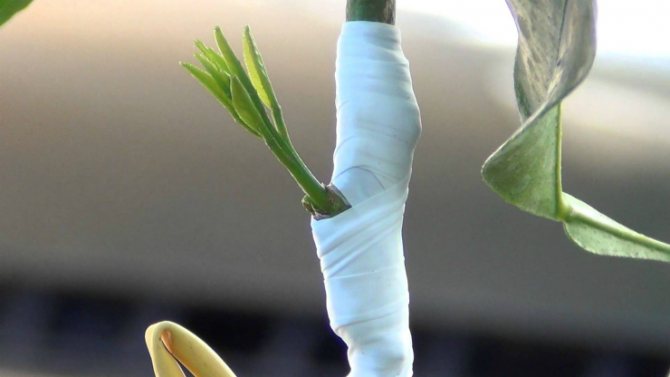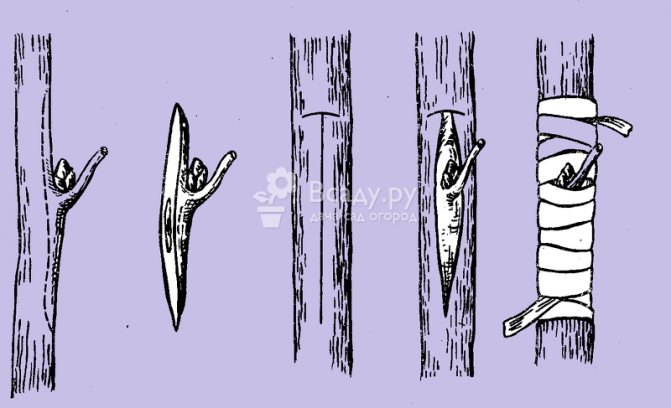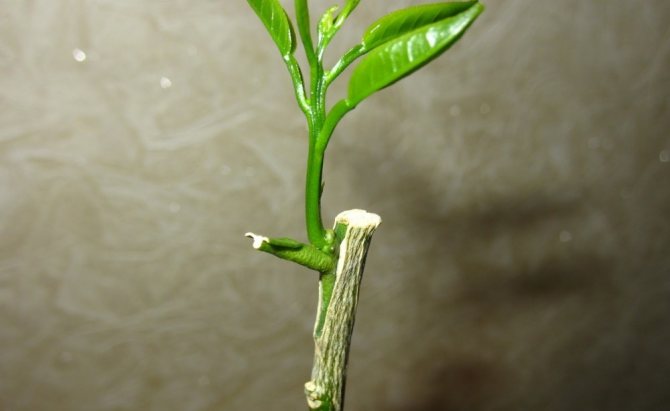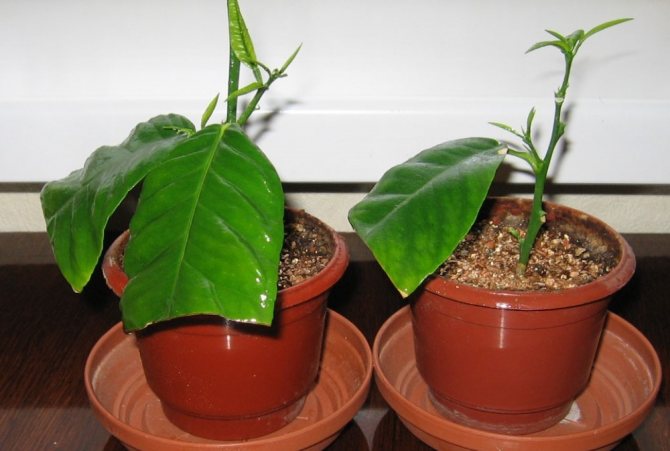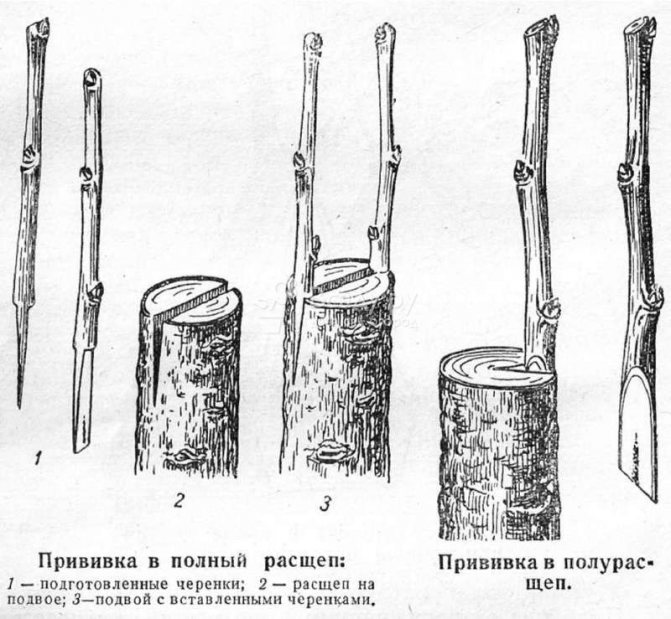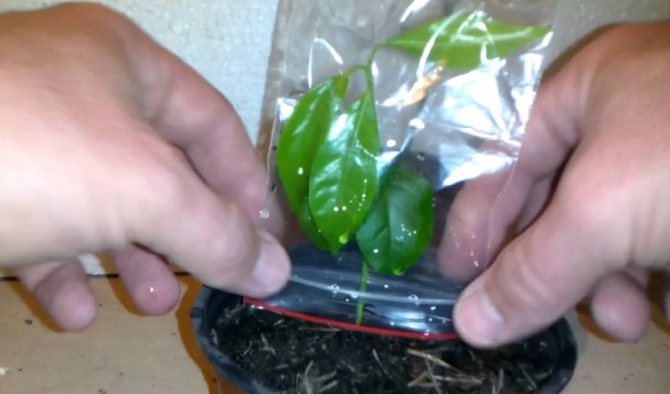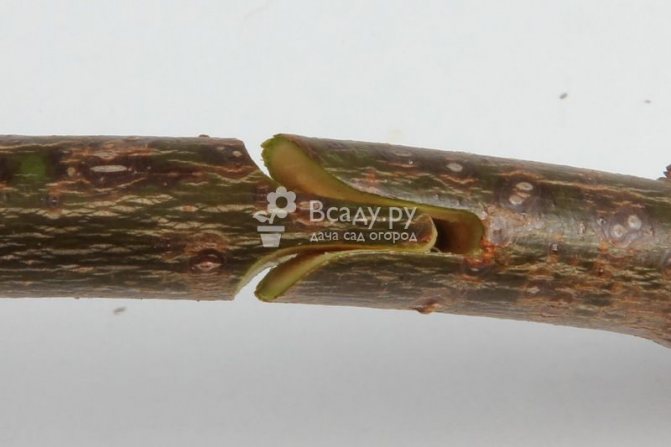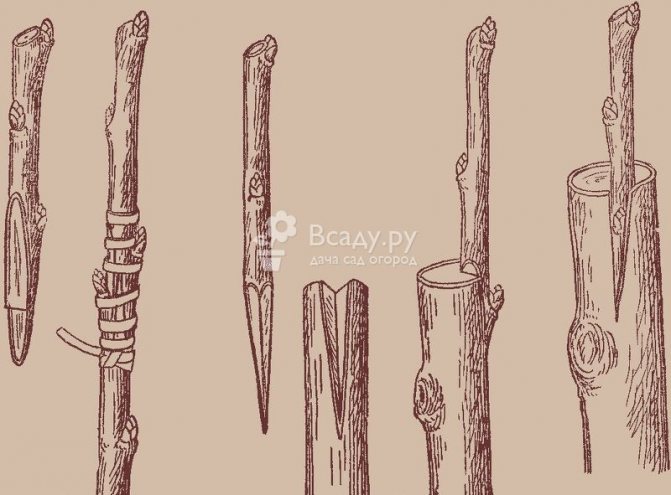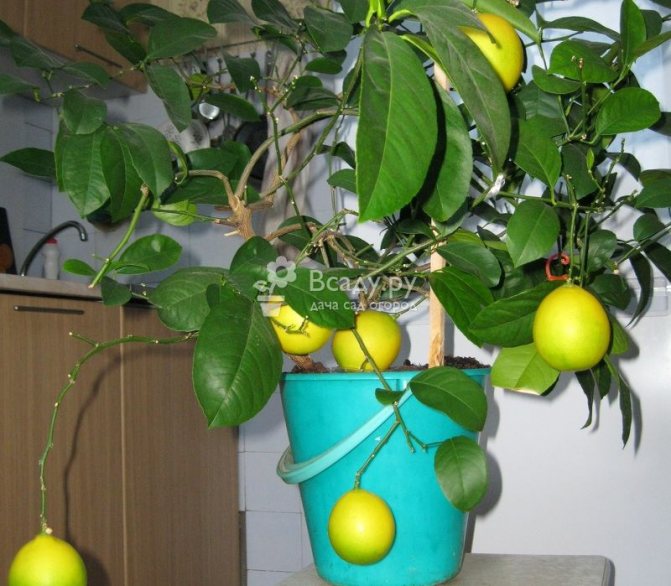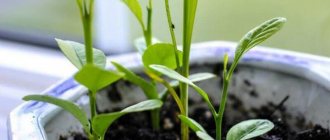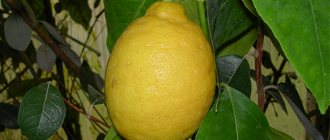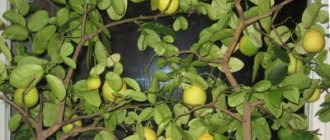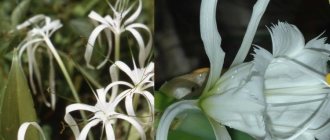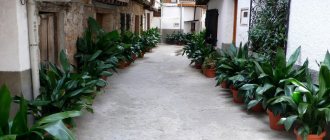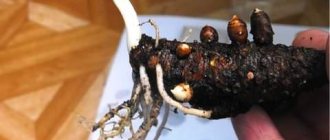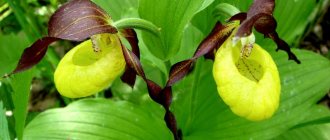In my house, like every person who loves to drink tea with lemon on long winter evenings, there is a lemon tree. In fact, I have three of them, and they all turned out completely by accident, from a seed from tea, spit out into a flower pot.
A grown lemon tree begs the question - how to plant a lemon at home. I must say right away that it is not at all necessary to plant lemon. He will bloom himself and begin to bear fruit in about 9 years.
If you're not in a rush, you can skip the fiddling around with the vaccine. Lemon looks great even without fruit, smells great and its leaves can be put into tea mixtures.

Benefits of grafting lemon tree


Not everyone decides on such a difficult procedure as it seems to inexperienced citrus growers, like inoculation. Indeed, one should not start such work without some experience and careful preparation of the inoculation material and tool.
But if all the rules are followed, a well-done inoculation of the estuary gives a lot of advantages:
- It helps to bring the first harvest of homemade lemon much closer.
- On the branches of a house tree, high-quality varietal fruits with known properties are tied and ripen, which is especially important because of the large number of hybrid plants that do not transmit their properties to descendants grown from seeds.
- You can plant a lemon on a cultivated orange tree or other citrus plant.
What is lemon grafted for?
Garden plants are grafted for the beneficial properties of one and the other tree. For example, a more delicate variety can be grafted onto a frost-resistant apple variety. The resulting hybrid will be resistant to cold weather, but it will yield more delicious heat-loving fruits.
Citrus fruits can be grafted together without any problems. With a little luck and the choice of budding method, you can get a small tree on which tangerines, grapefruits and lemons grow. It all depends on your luck as a garden surgeon and your imagination.


There are 3 main methods of vaccination:
- Budding is the insertion of an "eye", a bud from a cultivated plant and its implantation into the bark. This is the most gentle and most common method of grafting citrus fruits. Oculus means eye in Latin.
- Inoculation by cuttings. In this case, not a bud from a cultivated plant is grafted, but a whole branch with leaves. The sparing method allows implantation into the bark; there is a method of implantation “into the cleft”. In this case, the trunk is split and the grafted stalk is inserted into it.
- Copulation - association, lat. copulare. The copulation method involves an attempt to engraft the stalk on a trunk of similar thickness.
After grafting, the lemon begins to bear fruit almost immediately. It makes sense to plant a seedling about 3 years old with a formed trunk. Thus, the vaccination saves about 6 years of waiting for ripe lemons. After domestication, you can expect better quality fruit than a wild lemon that sprouted from a seed.
Interestingly enough, you can plant a lemon on a seedling of another citrus plant. This is one of the features of cultural grafting.They say that out of curiosity, young Michurinians once raised a "tree of peace" in Artek, where a variety of garden crops successfully grew and bore fruit on one trunk at the same time.


Vaccination tools:
- scalpel or similar knife of razor sharpness and fineness;
- sticky tape, electrical tape or adhesive plaster;
- garden knife;
- pruner for cutting off branches;
- drying oil natural or garden var.
Grafting is a traumatic procedure for a plant. Perhaps not everything will go as it should, there is a risk of ruining the plant. Risks to the plant are due to possible infection or damage.
Pay attention to the hygiene of the process, do not touch the cuts with your fingers, take care of the sharpness of the tools and immediately process the cuts with garden varnish immediately after the process is completed. The seedling on which the rootstock is made must be sufficiently developed and have some significant trunk thickness.
Grafting is best done in late spring when the sun comes out and the plant is preparing for active growth. Plants can also be grafted during the flowering period. Experienced gardeners successfully graft plants in the fall, but are less likely to succeed.
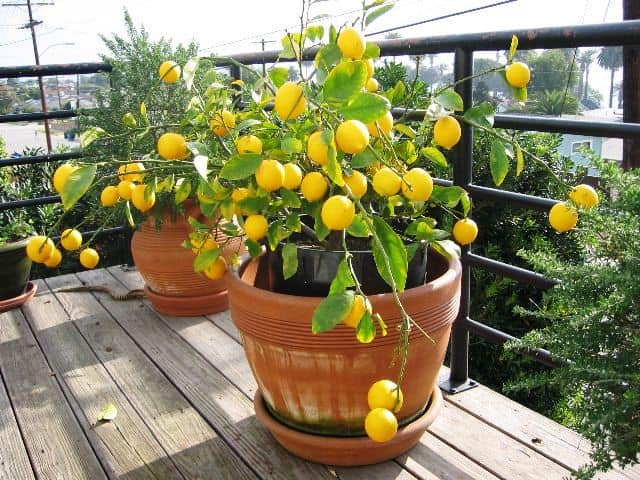

Lemon grafting methods at home
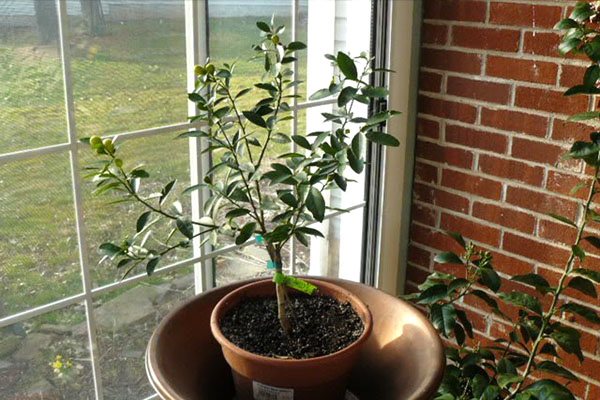

How to plant a lemon so that it bears fruit? At home, there are two effective and easy-to-use methods available:
- Lemon can be grafted by copulation using a cutting from a fruiting tree.
- Only a single bud is grafted onto the stock. This method is called budding and is also applicable to home citrus crops.
As a scion, take a bud or stalk from a ripe one-year-old or two-year-old shoot of a fruiting lemon tree.
The inoculated material is cut off immediately before the procedure, requires an extremely careful attitude and is covered with a damp cloth and film until the moment of inoculation.
Find your begonias among hundreds of varieties and species by photo and description
The rootstock is healthy, strong lemon or orange trees, starting from one year of age. It is important that the stem, or branch, if a lemon is grafted onto an adult plant, should not be thinner than 5–7 mm.
Perfect rootstocks - self-grown seedlings of lemons and oranges. They are initially acclimatized to the conditions of detention, as a rule, they have a developed root system and are quite hardy.
Experienced gardening tips
Grafting is a widely used method of plant propagation in horticulture, during which several parts of plants are combined (for example, the stems or leaves of another plant are grafted to the stem of one plant), and these parts subsequently grow together and become one plant. As a result, it is sometimes even difficult for a non-specialist to see that a vaccination has taken place. This can only be understood by the scar or thickening on the cortex at the transition site.
The part of the plant that joins the whole (it can be a stalk or a bud) is called a scion, in our case it is some kind of varietal lemon or tangerine. And the plant to which part of the other will join is the stock, that is, a wild plant with a good and strong root system.
With successful cuttings, the grafted branches will have color and fruits, like a varietal plant
Subsequently, both parts grow together and become one plant, they begin to positively influence each other. After grafting, the plant becomes more resistant to negative environmental influences, its appearance improves, mechanical damage and wounds on the tree are eliminated.


The grafting can involve a plant of the same species or closely related species.This method has a number of advantages: - this method is considered one of the fastest methods of reproduction; - a significant approximation of the first flowering and fruiting; - the ability to graft a lemon on another citrus plant (for example, an orange ); - fruits of higher quality, their number increases significantly; - availability and simplicity of the method (subject to technology).
Cutting method
Lemon is grafted by grafting at a height of 5-10 cm from the ground. The trunk must be cut completely. A place goes down from the cut and an incision of about 1.5 cm is made. A stalk with 2-3 nodes and with developed buds will take root in this place.The stalk must be cut obliquely, so that the cut size is the same as the cut in the bark. Before starting to plant a lemon, all the leaves are torn off from the cutting.
The bark where the incision was made is removed and the scion is placed. It is necessary to press the scion well against the tree. The bark is restored, the stump must be covered with pitch, and the pinching site is tightly bandaged. After the performed procedure, the tree is removed to a greenhouse or to a warm place. The plant should be there until the result is visible. If the stalk has not taken root, then it will begin to dry out, and when it begins to turn yellow, you can soon expect a harvest.
Features of reproduction in the open field
Lemon can only be grown outdoors in warm regions. In the north and central latitude, no tree variety can withstand even a slight drop in temperature.


Seedlings or cuttings of lemon are planted in open ground in spring or early summer, when the heat is established. For planting, choose a sunny area protected from the winds.
The seeds can be planted directly into the ground. To do this, they are washed well, then planted in the soil. It is not recommended to deeply deepen the seeds; it is better to sprinkle them with a thin layer of soil. When the seedlings sprout, the soil is regularly loosened and fertilized. Planting seeds in open ground is only suitable for southern regions with a tropical climate.
Preparation
Once you've decided on the method to use in the lemon grafting process, you should take care of your garden tools. With their help, the scion is grafted to the main stock. The set of tools for work should include:
- plastic tape or electrical tape in order to wrap the place of the entire operation;
- garden knife or blade;
- pruning shears for trimming excess branches in the grafting area;
- garden pitch, which will subsequently process the bark cut site;
- stock as a basis for scion;
- scion.
A lemon stalk for the grafting operation should be taken from a well-bearing tree. If you purchased branches and could not immediately graft them, then a refrigerator is suitable for storage for several days. Cuttings must be wrapped in a wet cloth and placed in polyethylene. Excess leaves are pre-cut. Only buds and leaf stalks are left. This method is used to prepare them for further work.
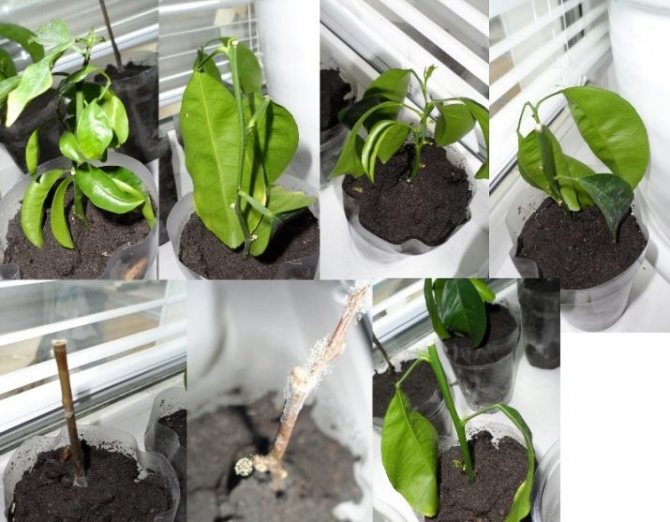

Embryo growth
After completing all the procedures, the stalk begins to grow.
Cuttings sprout
After the scion grows, cut off the top of the rootstock and tie up our lemon tree.
Remove the upper part of the rootstock and tie up the tree
Cutting off a portion of the stem above the scion can cause scions to grow next to the scion. In turn, this slows down the growth of the cuttings, and this is all due to the same apical dominance. Therefore, it is important to remove these scions.
Removal of rootstock shoots
In order to plant a lemon at home, you must:
- Choose a healthy fruit-bearing tree, cut off a couple of branches from it.
- Remove the leaves from the rootstock, leaving only the buds and petioles.
- Make a T-shaped incision on the rootstock bark.
- We peel off the bark from the trunk without touching the trunk itself.
- Separate the stalk from the branch and cut it off.
- We insert the graft into the gap in the rootstock bark.
- We wrap the vaccination area with fum tape or its equivalent.
- Cover the lemon tree with a plastic bag and put it in the shade.
Lemon vaccination tools and timing
Before planting a lemon at home, prepare everything you need for the procedure:
- sharp eyepiece knife or small scalpel;
- garden bandage or duct tape;
- garden var.
In order for the grafting to go smoothly, and a bud or twig alien to the lemon tree, take root, the procedure is carried out from April to May, when all vital processes are activated.During this time, the bark easily lags behind the wood, which makes it easier to complete the task. The second time when you can plant lemon at home is the end of summer.
All instrumentation must be clean. Before planting a lemon, the shoots in the places of future cuts are carefully wiped with a damp cloth.
Plant care
After the operation, the plant is given a warm, bright place, protecting the tree from direct sunlight. The creation of a greenhouse effect with high humidity for the grafted twig is a prerequisite for a good survival rate of the graft, for this purpose a plastic bag is needed.
It is removed daily for ventilation and the site of inoculation is sprayed with a spray bottle.
If wild leaves begin to bloom on the trunk or branch of the scion below the grafted area or lateral shoots appear, they must be removed immediately in order to provide the grafted seedling with a better flow of nutrients. After the operation, the plant is not fertilized until the sprout has completely taken root.
The shoot appears in 2-4 weeks after the performed manipulations. He needs time to grow and get stronger, so the bag is not removed, making sure that it does not come into contact with young leaves.
After 1.5-2 months, you can gradually begin to accustom him to the usual conditions of detention. First, the bag is removed daily for 30-40 minutes, then the time is increased to 1.5-2 hours. After 5 days, the plant is released from the bag. If during the day the leaves begin to lose elasticity, put it back in place and let the lemon a few more days.
When it fully adapts to the indoor temperature and humidity, remove the cloth bandage and fixing tape.
If the stalk or bud during the first 5-7 days after inoculation retains freshness and elasticity, they have not darkened or dried out, it means that the grafting was carried out correctly, they are alive, and then everything depends on caring for the plant.
If the operation is unsuccessful, you need to give the plant a rest, and repeat it in a month. Today in flower shops you can find already grafted lemon seedlings, but growers try to grow it on their own, since purchased plants often die shortly after purchase.
Of course, vaccinating on lemon requires knowledge and skills, but if you carefully study the subject and do everything carefully, the chances of success are noticeably increased - in 2-3 years fruiting will begin, and the pet will delight the owner with the first harvest to the envy of friends and acquaintances.
After vaccination, the lemon needs care. In order for the graft to take root, it is necessary to provide favorable conditions for the growth of the plant. He should have enough sunlight. If it is constantly cloudy outside, turn on additional lighting.
After the procedure, you can increase the amount of dressings. During this period, the tree needs more nutrients. The grafted tree is covered with a bottle. Every day it is removed for 2-3 minutes to ventilate the soil. To ensure that there is an optimal level of humidity under the bottle, a damp cotton swab is placed there. The bottle can be removed after 2 weeks.
Cover the grafted plant with a plastic bag and place it in a shady corner for about 3 weeks. At this time, it is necessary to carry out regular ventilation and remove unnecessary shoots. If, after a healing period, our scions are green, then everything is done correctly.
The spine began
Citrus grafting is recommended between April and August. At this time, the active movement of juices begins, the scion will take root better. A cloudy day is good when the air humidity is high. In this case, citrus should be grafted only at an air temperature of at least 17 ° C.
The grafted lemon tree at home is placed under sterile conditions. To do this, prepare a mini-greenhouse:
- A tree with a pot is placed under a film or bag. A large glass jar will do as well.
- A container of water is also placed there to maintain humidity.
- Open the structure twice a day for 2-3 minutes. Gradually increase the air flow up to 5 min. by the end of engraftment.
The tree should be kept in this mode until the moment when it becomes clear whether the procedure was successful. All leaves are removed from the scion: if after 15 days the petioles are easily separated, the procedure was successful. If the cuttings turned black, the scion did not take root.
How to graft a lemon grown from a seed Grafting an adult indoor lemon
Vaccination of indoor lemon and any citrus fruit Master class by Sergei Marinkov
Citrus grafting technique. Technique grafting citrus
An unsuccessful procedure has many reasons: infection, weak plants, violation of technology. To increase the chances of success, several rootstocks are prepared and the procedure is carried out in different ways. It is also permissible to use a special pruner that makes even sharp cuts.
If successful, after 15 days, the bandage is loosened, then removed. The terms of full growth are from 3 weeks. Caring for the established scion:
- untie the tape (glove, elastic bands);
- a young branch is fixed vertically (tied to a stock or a vertical stick);
- water the plant regularly, maintain humidity and temperature;
- the stock is cut off at a height of 10 cm from the vaccination site (if budding was used).
rules
You can plant a lemon at home if you choose the right stock. The rootstock is a plant that shares many characteristics with lemon. This is the tree on which the lemon stalk is grafted. It is desirable that it is also a citrus plant or a tree belonging to the same family (rue).
Lemon itself, bigaradia (sour orange), sweet orange, tangerine, grapefruit are used for the stock. These plants have a strong root system. This feature allows the grafts to supply the grafted plants with nutrients. In scions of this group, calli (a kind of calluses) grow rapidly at the sites of tree injuries, where grafting was carried out. Calluses protect the sore spots of the injured tree and promote their rapid healing.
It is best to choose dwarf trees for the rootstock. Trees grow very actively, which causes certain difficulties in care. You can make a dwarf rootstock yourself.
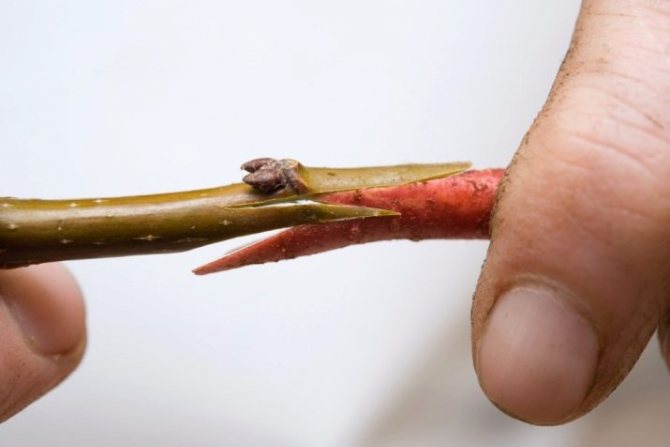

Cut the bark at a short distance from the roots of the tree in a circle. The removed bark is fixed in place of the cut with the reverse side. After it is tied to a tree. This procedure significantly slows down the movement of sap along the branches and, accordingly, the growth of the tree cannot be intensive. To maintain the slow growth of the tree, this action should be repeated once every few years. The main rule for the success of the entire event is the presence of a fruiting scion.
If you graft a lemon to a tree that bears no fruit or bears little fruit, the chances of a lack of yield on the grafted cuttings will be very high.
In order for the incision to heal quickly and efficiently, it is wrapped in polyethylene or other material.
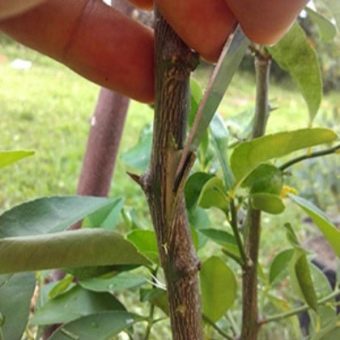

Choice of rootstock and scion
For the buds to grow
- ensure that the vaccine is clean and sterile;
- cut only with a sharp knife, preferably with a clerical or scalpel;
- cut off the extra shoots from the stem that appeared in the process of apical dominance;
- start daily watering of the stock a few days before budding;
- after grafting, place the plant in a dark place, cover it and ventilate it regularly.
Home-grown lemon from seed often practically does not bear fruit.
How to vaccinate so that the indoor lemon from the seed begins to bear fruit:
- First, the stock is selected. It should be a strong and healthy bush that does not get sick.
- Then the kidneys are cut. They should be large and not showing signs of damage. Slice them with a piece of bark.
- A shallow incision is made in the rootstock, the bark is gently moved aside and the bud is inserted into it.
- Fix it tightly with tape.
- The rootstock is covered with a bottle, wet cotton wool is put inside so that it is damp in the greenhouse. Once a day, the bottle is removed for 2 minutes to ventilate.
- After 2 weeks, you can spray the stock with a special solution that awakens the kidneys. It can be the drug "Amulet" or "Zircon".
After 3 weeks, the bottle is removed. Now you need to wait for the kidney to take root in order to remove the tape.
Gardening tips:
- It is impossible to grow a fruit-bearing lemon from a seed. Even if one day the tree bears fruit, it will taste bad. In order for the tree to bear fruit, grafting is carried out or cuttings are planted from an adult plant.
- During vaccination, all actions are carried out quickly. If you perform all the manipulations slowly, the tissues may begin to oxidize, because of this, the vaccine will not take root.
- All tools and hands should be thoroughly washed with soap.
- All cuts should be smooth and even, there should be no chips or creases. Therefore, before the procedure, you should sharpen the instruments again.
- The place on the scion, in which the cutting will be fixed, and the cutting itself is wiped with a wet cloth.
- The graft is not cut in advance, this is done immediately before the rootstock is inserted into it.
Observing all the rules of agricultural technology, it will be possible to successfully vaccinate lemon even for a beginner.
To obtain a positive result, it is recommended to care for the seedling grafted into the cleft.
Compliance with a few simple rules will help make the procedure for waiting for juicy lemons interesting and exciting.
Consider:
- Humidity. After grafting, plant breeders recommend that you always keep high humidity at the site of the splitting. To do this, the inoculation is sprayed with water, covered with a plastic bag. The inside of the bag also needs to be moistened to create a greenhouse effect.
- Temperature. To get fruit, the lemon must be placed in a bright room, but it must not be placed in direct sunlight. The air temperature should be no more than 23 degrees.
- Lack of fertilizers. Watch how the seedling takes root. Until it takes root, it is prohibited to use any fertilizers. The optimal time to start feeding is 3 months from the date of grafting.
- Airing. Open a plastic bag every day and air the plant for 2 minutes. After that, you need to spray it again with water and close it.
- Provide free space for the leaves. Lemon leaves should not touch the bag; you can insert a loop for this. Instead of a bag, you can use a sealed plastic bottle with a cut-off bottom.
A lemon grown from a seed is most suitable for grafting: shoots will go from such a tree in 2-4 weeks. If you plant a plant with seedlings, its development will occur faster.
Important! In the process of waiting for shoots from grafting, new flowers may appear: they should not be left in any case. All formed flowers must be removed. It is believed that if at least 10 good leaves are present, then the flower can not be removed.
If the cultivation of lemon is only in the plans, we will answer the question of where to get a tree sapling. It is better to ask for it from friends who have been caring for and growing their lemons for a long time.
Useful video
Budding methods
Knowing how to plant lemon properly can help you get the results you want faster. There are 2 ways to plant indoor lemon:
- The plant can be grafted by copulation using a cutting from a plant that bears fruit.
- In the second method, only one kidney is pinched. This method is called budding and can be used for seed-grown lemons.
In the form of a peephole, a kidney or a shoot is used. They take it from an adult tree, from 1 to 2 years old, which is already bearing fruit. The material must be trimmed before the procedure itself. They do it very carefully.After cutting, the material is placed in a wet napkin or film with water.
Adult trees are used for the stock. If grafting is carried out for an adult fruit, the size of the branches must be taken into account, approximately 5–7 mm. Seedlings that were grown indoors have strong immunity and developed rhizomes.
Lemon tree grafting informative video
Lemon grafting is a difficult procedure and often, especially inexperienced growers rarely manage to successfully carry out it the first time. But despite all the complexity, it is necessary to carry it out.
Why vaccination is needed:
- The procedure helps to speed up the receipt of fruits.
- Not all lemon varieties can be propagated by cuttings or seeds, in some cases grafting is the only way to propagate a tree.
- You can get a tree with new and improved characteristics.
After the procedure, shoots develop, on which fruits may appear the next year. Therefore, if you have a fruiting rootstock, you can quickly get lemons.
Lemon is considered a thermophilic perennial tree that is profitable to grow at home.
Many growers often rely on grafting citrus to help it give fruit faster.
A tree grown from a bone will be able to bear its first fruits on its own in 7 years: this will only happen with high-quality home care.
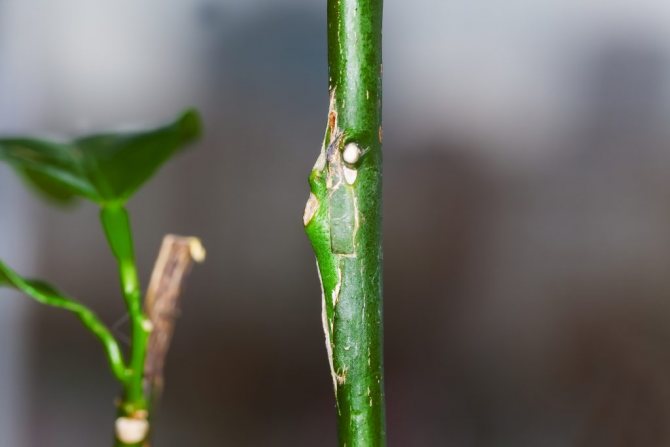

Some varieties of indoor citrus are capable of bearing fruit within a year after grafting.
If you carry out this procedure correctly, then you will soon be able to admire the bright ripe lemons.
This is how the process of properly vaccinating at home looks like:
- Selection of tools. For work, you will need a pruner or a knife for budding, a sharp blade, plastic tape, cotton wool and cloth. A garden pitch is also needed - all of these tools can be easily purchased at a garden store.
- Choice of stock. This word refers to the plant on which grafting takes place. Usually, seed-grown lemon is chosen for the rootstock. The diameter of its trunk must be at least 5 millimeters. For the rootstock, it is better to take directly lemon, grapefruit, orange or tangerine, depending on the desired properties of the final fruit.
- Rootstock varieties. If it was decided to plant on lemon, choose the homemade Dioscuria or Meyer varieties. If they are grafted onto a tangerine, they take dwarf, but stocky trees.
- Graft. It is taken only from plants that have previously borne fruit. It is important that the scion does not have thorns and leaves, but has only rudimentary shoots.
- The choice of the method. It is possible to inoculate by budding, copulation and splitting. The latter method is considered the most common: an incision of the stem is made on the rootstock to a depth of 2 centimeters, where the prepared cutting is grafted.
Adequate cleavage care can help produce quality, healthy fruit. The video shows how to vaccinate yourself with an explanation.
Depending on the choice of vaccination method, the time of year when the procedure is to be carried out will differ.
Some methods involve vaccination only in the spring, while others allow the procedure in spring and summer.
It is worth noting that without grafting, it is worth waiting for fruits from a citrus tree only after 5-7 years, while after grafting, the lemon bears fruit the next year.
Note! For 1 month before grafting a tree, it is recommended to carefully check its root system: if it is weakened, the plant is not suitable for rootstock.
Many breeders choose exactly the spring period of time for grafting. In the spring, all living things begin to wake up, therefore, the tree starts up new branches and leaves.
Citrus grafted in spring bear fruit much more often and faster.
| Method | Season | Features of the |
| Budding | April and early May are the time of active movement of the tree sap. It is during this period that the procedure is recommended. Some breeders carry out budding "sleeping eye" in August | An incision is made on the stem where the scion is inserted |
| Copulation | Used in winter or early spring before the citrus tree has buds | The dressing is carried out with polyethylene tape, the cuts must have an oblique section |
| Into the cleft | Early spring is the best time for grafting with a cuttings. It is then that the plant gives off new shoots. | The graft is inserted into the plant, where the cut is cut in two. |
In conclusion, we suggest watching a video that clearly demonstrates the entire process of budding. The author shows several methods of inoculation: “under the bark” and “into the cleft”. We wish you a pleasant viewing!
How to inoculate a lemon with a bud or "eye"?
Vaccination is considered the less traumatic and most reliable way to administer the vaccine.
Before planting a lemon at home, a fully formed bud is cut off from a branch of a fruit-bearing tree so that about 15 mm are left above and below the future shoot. Two longitudinal cuts at a short distance from the bud outline the boundaries of the resulting scion.
The cut is made semicircular, capturing not only the bark, but also a very thin layer of wood. This will allow the graft to take root easily and protect the kidney from possible damage. The finished shield with an "eye" after separation from the branch remains on the knife. It should not be touched with fingers, otherwise the success rate of the lemon vaccination drops sharply. You can hold the grafting material by the petiole of the leaf remaining under the bud. The very same sheet plate is removed.
Choosing a recipe and baking lemongrass pie for a festive table
If a young lemon tree is used as a rootstock, then at a distance of 5–7 cm from the surface of the soil, a neat "T" cut in the bark is made on the stem so that the prepared scion freely goes under the allotted corners of the bark. The length of the transverse notch in this case is approximately one and a half centimeters, and the longitudinal incision should be one centimeter larger.
When a piece of wood in the bud is in its place, it is covered with the bark edges bent back, pressed and tightly bandaged in the direction "from below -", leaving the peephole itself and the leaf stalk near it in the air.
In a similar way, you can inoculate a lemon, but not on the trunk, but on a large shoot of an adult tree of another species, for example, an orange. In this case, if the bud takes root, lemons and oranges are harvested from one plant.
For better survival, it is useful to put a small tree in a greenhouse or cover with a bag. This measure:
- increase air humidity;
- excludes sharp temperature fluctuations;
- will prevent the negative effects of drafts.
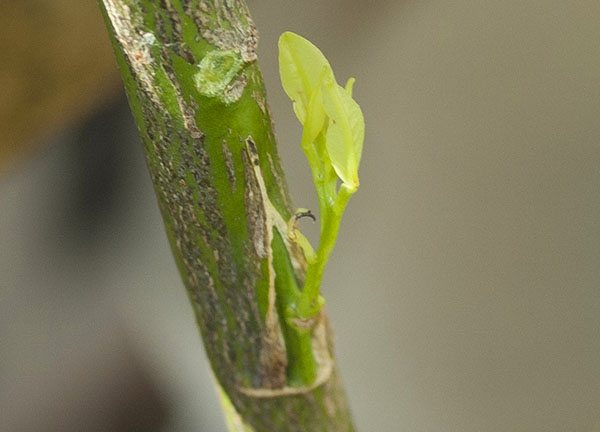

The video on how to plant a lemon at home reveals all the secrets of this interesting and not so laborious procedure as it seems. You can find out about the result of the work done in a couple of weeks. If the leaf stalk under the bud has withered and is about to fall off, everything has been done correctly, and soon you can observe the growth of a new shoot. In this case, after a couple of weeks, the bandage at the place where the lemon was inoculated is weakened, and when the plant gradually gets used to the room air, it is completely removed.
Budding
The most common method of grafting a lemon is budding. This type of vaccination is considered the most successful.
The best time for such grafting is the moment when the lemon begins the period of maximum sap flow in the tree (early April - mid August).
If you are grafting a plant in April, then you need to choose a sprouted peephole, if in August - a dormant peephole.
What tools do you need to get vaccinated?
- A knife, preferably a garden knife.
- Rounding knife and sharpened blade.
- Polyethylene tape.
- Plastic bag.
- Garden var or linseed oil, bandage and cotton wool.
The grafting process by budding method is as follows:
- Timing. You should choose a time when the weather outside will be humid so that the peephole is protected from drying out.
- Stock preparation. Use a bandage to remove dust and dirt from the rootstock trunk.
- Cut off one, two, or three year old twigs. Choose the most developed kidney, in your opinion, and make an incision in a horizontal position: 1 cm above and 1.5 cm below the eye. Next, focus on the mark made - cut off the bud with a small part of the bark and a layer of wood - a shield. The direction should go from top to bottom. Do not touch the eye with your fingers - you can infect, it is better to hold the leaf by the handle.
- You need to deepen the knife into the cutting under the soil, then loosen the pressure a little and bring the blade to the top of the cutting.
- Choose a grafting site on your lemon, the distance should be about 10 centimeters above the ground, there should be no buds or cuttings.
- You should make one shallow transverse cut with a knife with one pressure, then a longitudinal one from its middle (no more than 3 centimeters). The bark that you trimmed must be pry off with the bone of the budding knife. You should put the bark back in place and leave a hole at the very top, through which you will enter the kidney.
- Take the peephole by the stalk and insert it into the T-shaped incision, you need to slightly remove the bark of the plant.
- Wrap up the spot you just grafted. But the process of bandaging should take place from the bottom up, in order to avoid water ingress.
- Experts recommend lubricating the graft site with garden varnish.
Before grafting a lemon, first you need to understand the methods that can be used to carry out this procedure. The most common of them are budding and splitting, and which one to choose is up to you. But it is important to remember that budding can be applied absolutely at any time of the year, but splitting is permissible only during periods of active sap flow, that is, in April and May.
So, grafting lemon at home is done using a scion - a fruiting cuttings, which, in fact, will be grafted onto the plant. It is advisable to plant a lemon tree immediately after the scion is cut, but this is not always possible. And in such situations, the cutting should be wrapped in a cloth soaked in water, which must be packed in a plastic bag. Then all this must be placed in the refrigerator until the moment you decide to start the lemon grafting procedure.
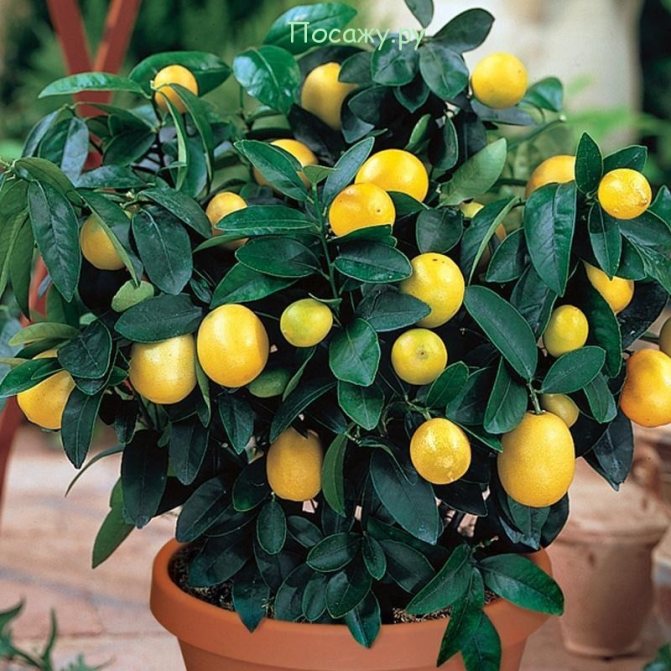

Using the budding method, it is necessary with a knife to make an incision on the trunk of a lemon tree 2.5 cm long, and the incision should be at a distance of at least 10 cm from the ground. Taking a twig, you need to select the most developed bud on it and make a horizontal incision at a distance of 1.5 cm below and 1 cm above the "eye". Then it is necessary to cut along the established marks, trying to capture the wood as little as possible. Removing the leaf plate from the bud and leaving the stalk, we get the so-called scion.
Next, the scion should be inserted into the resulting incision in the lemon tree, secured with an elastic tape in the "bottom-up" direction. Also, all open parts of the wood must be lubricated with garden varnish, and a little lower to apply moistened cotton wool. The applied bandage can be removed no earlier than in a month, as a rule, this time is quite enough for the scion to grow together with the bark of the lemon tree.
And you also need to consider how to plant a lemon so that it bears fruit using the splitting method. As in the previous case, it is necessary to make a cut in the bark of the lemon tree at the same distance, but this time it should be 2.5 cm deep and 1 cm wide. Oblique cuts should be made on the handle to get the appearance of a wedge with sharp corners.
It is also very important to know how to properly care for indoor lemon.
- View the full image
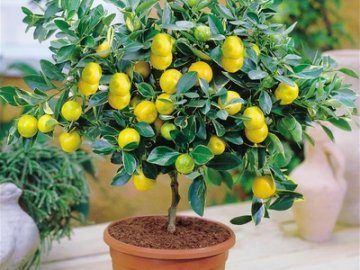

- garden knife;
- sharp blade or eyepiece knife;
- PVC tape;
- cellophane bag;
- cotton wool and garden var.
Subcategories
How to plant homemade lemon? Citrus grafting is carried out in two ways: by budding, when a bud is grafted, or by copulation, when a stalk is grafted. Budding can be carried out at any time of the year. The most suitable time for copulation is April-May, August-September. During this period, sap flow begins and the bark easily moves away from the trunk.
In order to plant a lemon at home, you will need a pruner or a grafting knife, scion, film, electrical tape, cotton wool, damp cloth, garden var. The tools must be well sharpened, the accuracy of the work and the evenness of the cuts will depend on this.
In order for the grafting of homemade lemon to be successful, it is recommended to wash your hands and working tools before carrying out work, and wipe the scion and stock with a damp cloth. Slices should be made as even and neat as possible.
Budding should be carried out on cloudy days in the morning or evening. Cuttings of the desired varieties are prepared in advance. For this, 1-2-year-old semi-lignified cuttings and leaves on them are cut from healthy, fruiting trees, leaving only petioles.
Budding is carried out from the north side of the stem. At a distance of 7-9 cm from the top, a T-shaped incision is made to the wood with a length of 2-3 cm, bending the edges of the bark. The petiole and the eye are cut at the same time so that the cut is smooth and even. The cut begins above the kidney, then with a knife blade is carried out under the kidney, trying to capture as little wood as possible. The cut width should be 2.5-3 cm.
Then the stalk is taken out, the shield is cut off from it, in the place where the kidney is located, it is inserted into a T-shaped incision. The shield should fit closely into the incision. The vaccination site is tied with an elastic tape from top to bottom. The peephole must remain free. After 10 days, the quality of budding is checked. The healthy and fresh appearance of the eye is evidence of successful work.
Later, the rootstock is cut 10 cm above the established bud. An shoot that has grown from a bud is tied to this place. When the shoot reaches 15 cm, a stump is cut above the grafting site. The remaining cut is treated with garden pitch.
To make the eyes easier to take root, the plant is covered with plastic wrap, which is tightly tied with a rope from below. Damp cotton wool is left inside such a "greenhouse" to create optimal humidity in it.
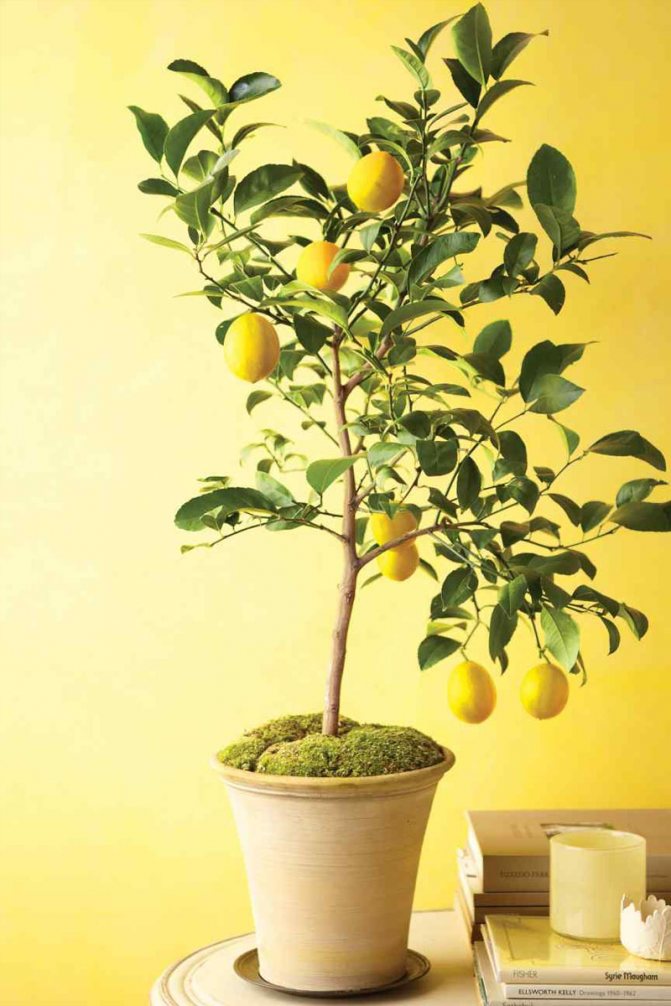

Lemon grafting at home is carried out by copulation. This method is widespread among gardeners. Copulation is carried out “under the bark” and “into the split”. The most favorable period for this work is spring, when the tree is actively growing. The stock, but which will be grafted stalk should reach no more than 2-3 years.
Often, lemons are vaccinated at home using the bark method. To do this, the rootstock branch is cut off at the place of its transition to a vertical position. Next to the hemp, a vertical incision is made in the bark to the wood, after which the corners are slightly bent. Several such cuts are made, depending on the thickness of the hemp, at a distance of 4-6 cm from each other. Cuttings with oblique cuts are inserted into these cuts. The surface of the hemp is covered with garden pitch. The vaccination site is tightly wrapped.
A lemon tree that has grown from a seed can begin to bear fruit only at 8-10 years of age, and a grafted tree bears fruit for 3-4 years. This article will help you understand the question of how to vaccinate lemon at home - what is needed and how to vaccinate.
Now let's look at how to properly plant a lemon at home. You can use a method such as budding. It is this grafting that is considered the most successful and often used for the propagation of all citrus fruits. The optimal time for the procedure is when the period of maximum sap flow in the tree begins, and this is from April to the end of August.If grafting occurs in April, then a peephole is chosen that has already sprouted, and in August, a sleeping peephole is used.
This video will show you how which tools are used to graft plants.
It is advisable to carry out the grafting procedure itself by the budding method when it is wet, cloudy weather outside. By such actions, we can protect the eye-bud from premature drying. Let's go directly to the lemon grafting itself. First, you need to clean the rootstock trunk of dust by wiping it with a damp cotton ball. Then, using a sharp knife at a distance of 7 cm from the ground, we carefully make a T-shaped incision on the bark of the stock.
In this case, one must try not to touch the wood: first, a shallow transverse incision is made approximately 1 cm.From its middle downward, a vertical longitudinal incision is made, the length of which is 2.5 cm.As a result of these actions, corners will appear on the bark, which will be necessary with the help of bend the knife and insert our peephole into the resulting gap.
Required tools
Before starting the procedure, you need to prepare all the necessary tools:
- special eyepiece knife or scalpel;
- garden bandage or duct tape;
- garden var.
To inoculate the lemon into the split perfectly, and the branch or bud can take root, the process is carried out in April or May. During this period, all trees begin to bloom, and the bark easily moves away from the tree, which will help to complete the task. And also the fruit can be inoculated at the end of summer. Vaccination tools must be taken clean, and the branches that will be cut are wiped with a damp cloth.
Kidney vaccination method
Copulation vaccination is not such a shocking method. Before starting, a well-developed bud is cut off from a fruiting tree. They do this in such a way that there is space left at and below the future branch, about 15 mm each. Make two cuts, mark the edges of the peephole.
Cut off the bud in a semicircle, go under the bark, cut off the bark itself and a little tree. So the scion will quickly take root and protect the kidney from possible injuries. The finished material is left on the cutting tool. After that, it is forbidden to touch it with your hands, otherwise the vaccination may fail. You can hold the bud only underneath or hold part of the leaf. The sheet plate must be cut off.
If a young plant is used as a rootstock, then the material should be cut off at the level of 5–7 cm from the ground. And also make an incision on the trunk in the form of the letter "T". The graft will easily go under the bark. The length of the incision should be 1.5 cm, and the axial incision should be 1 cm longer. When a piece of wood with a bud is placed in the place where it will take root, it must be covered with the sides of the bark. The bark is turned away before starting the procedure. When the bark is covered, the branch is well bandaged "from below", but so that the stalk of the leaf remains in the air.
In the same way, you can pinch a citrus to an orange, the fruits will grow in two types.
In order for the material to take root better, the tree is transferred to a greenhouse or any other warm place, and you can also cover it with a bag. Such actions will help:
- increase the humidity of the environment;
- there will be no possible temperature fluctuations;
- there will be no drafts.
After 1.5 months, as the fruit was planted, the branch of the rootstock must be cut off. The cut should be diagonal and just above the graft site. After that, the cut off place must be treated with garden varnish. The new branch will be able to completely replace the rootstock trunk. Based on this, the shoots that appear below are removed, and the young trunk is propped up.
Vaccination methods and their features
It is best to plan the procedure from April to August, perform work on a cloudy and rainy day, when the air humidity is high, after wiping a knife or pruner with alcohol and washing your hands.Next, we will talk in more detail about each of the three methods of vegetative reproduction.
Copulation
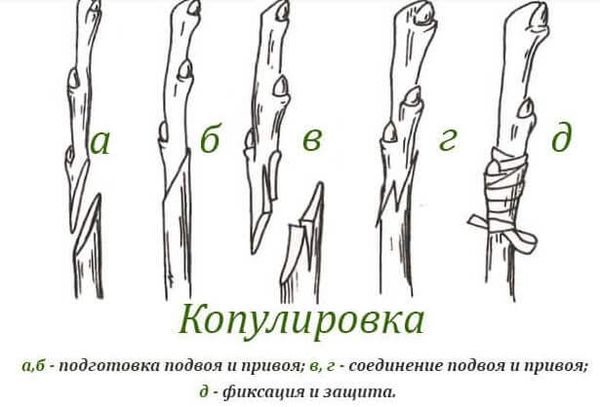

The term comes from the Latin word copulare, which means "to bind" or "to connect." Copulation can be simple and improved, this is a type of cuttings, for which a scion and rootstock of the same diameter are taken.
It is necessary to make oblique cuts on the stem of the mother culture, as well as on the handle, wrapping it tightly with tape or bandage, but carefully so as not to damage the plants. The dressing material can be removed after the revived stalk has sprouted after a while.
Budding
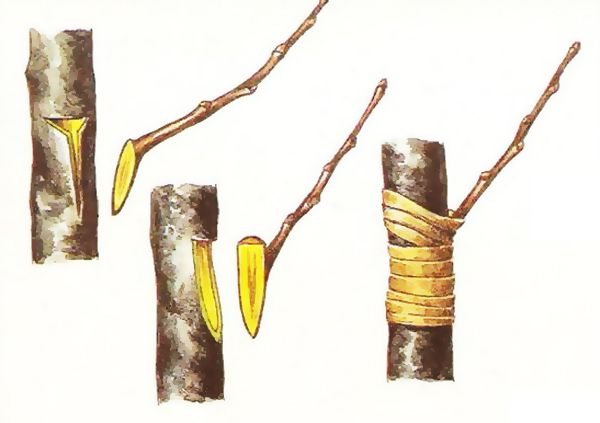

The method owes its name to the Latin word oculus, which means "eye". The procedure is the introduction of a bud, covered with a small layer of wood and obtained from a branch, into the bark of the rootstock.
For grafting with an eye on the bark of a previously cleaned stock, an incision is made in the shape of the letter "T", a scion is inserted into the slot, and the tape is fixed so that the bud is open. The surface is treated with garden varnish, the culture is closed with a plastic bag or plastic bottle. It turns out a mini-greenhouse with a suitable microclimate.
For good fusion, airing and removal of excess shoots are required.
The ways
For grafting to be effective, it can be done in several ways. Experts recommend using for this:
- Cuttings. This method is allowed to be used in summer and spring. It is carried out by branches that have a certain amount of foliage. Cutting is divided into two more ways - in splitting or behind the bark.
- Copulation. When grafting a plant, the stock and the grafted material of the same thickness are used. This procedure is simpler and more efficient.
- Budding. Gardeners use this method most often. The best period for the procedure is the spring months - April and May. Budding involves the use of a single tree-covered bud, it is picked up from the cuttings of a cultivated flower. The resulting peephole is placed in the bark of the rootstock.
To achieve the greatest effect from the procedure, it is important that the bark of the scion and rootstock is tightly pressed during the wrapping process with polyethylene. The container with the engrafted handle is placed in a warm place.
Copulation method
This method is important to carry out in the winter, when the culture falls into a dormant state. Also, copulation is allowed to be carried out in the spring, when the buds on the plant have not yet begun to form. This engraftment method is considered to be more widely applicable. Collecting lemon is not so difficult:
Budding (in other words - grafting with an eye) is an easier method of grafting by means of cuttings. The procedure is allowed to be carried out from mid-spring to the end of the summer season. At this time, the crops begin the process of sap flow. In spring, an already germinated eye is used to inoculate the plant, and at the end of summer, the material is used in a dormant state.
For the scion, the shoot with the bud is cut off with a sharpened knife. Next, several cuts are made on it in the horizontal direction. The first is carried out 1 cm above the bud, the second - 1.5 cm below the cut shoot. To carry out budding, it is important to do the following manipulations:
- a T-shaped cut is made on the bark of the peeled stock;
- after the incision, the bark must be slightly bent to the side;
- a previously prepared grafting material is placed in the resulting gap;
- the place where the scion and rootstock are combined is wrapped in polyethylene, while it is important to take into account that the bud itself remains on the surface;
- the place where the vaccination was carried out is treated with a special varnish.
It is important to cover the grafted crop with a cut-off plastic bottle or a plastic bag - this will help ensure a greenhouse effect. When two materials grow together, it is important for them to be given airing and to regularly remove excess shoots from them.
The connecting dressing and the greenhouse shelter are allowed to be removed after one month. If budding was carried out efficiently, then the stalk will disappear on its own, and a peephole will remain on the stem after it. The rootstock is cut at a distance of about 10 cm from the grafted bud.
It is important to carry out budding in cloudy weather. A high level of humidity will help protect the kidney from excessive dryness. The best effect can be achieved if you follow all the advice of experts:
- ensure the sterility of the entire procedure;
- it is important to make all cuts with a well-sharpened knife;
- strong and healthy crops are used for the stock;
- after vaccination, it is important to eliminate all unnecessary shoots;
- before vaccination, it is important to water the mother culture well for several days;
- after grafting, a plastic wrap is used, which is often ventilated;
- the soil in the established "greenhouse" is moistened with a cotton swab dipped in water.
Lemon can be planted with your own efforts at home without spending too much time. To achieve the maximum effect, it is important to choose the most appropriate vaccination method, as well as to carry out the entire procedure correctly.
Young shoots have a negative attitude towards direct rays. For proper formation, sunlight must be in the right amount. It is best to use fluorescent lamps for this. It is important for cuttings to provide good moisture. With proper humidification, condensate settles on the walls of the resulting greenhouse. To ensure the best flow of sap, it is important to water the stock well for several days before the intended grafting procedure.
How to choose a stock?
For the effectiveness of the vaccination result, a high-quality rootstock should be selected - the culture on which engraftment is carried out. A good mother plant will be a seed-grown sprout with a diameter of half a centimeter.
Strong shoots of citrus crops such as grapefruit, orange and lemon are often used as a rootstock. When choosing a plant for grafting, one should take into account the distinctive characteristics of the plant - growth, taste, tendency to disease.
An excellent option for grafting a houseplant will be a stock of undersized or dwarf crops.
Before the engraftment process, several small lemon branches are harvested. Such a scion is a material that is grafted onto a mother seedling; only a fruiting plant should be taken. The shoots are cleared of thorns and leaves. Only rudimentary shoots and petioles should remain on the branches.
Which way to choose?
At the preparatory stage, the seedling is examined for the presence of diseases and developmental defects. Weak root system, underdeveloped crown, soil diseases affect the quality of grafting. If any diseases are detected, the plant is isolated from others, and measures are taken to eliminate them.
During the inspection, the most suitable method is determined. Copulation is a universal technique, budding is used when the crown is formed on a young shoot, splits are not installed on a thin trunk. The optimal stock will be a shoot with a trunk diameter of 5-6 cm.
At the request of the owner, 2 grafts can be made simultaneously for 1 seedling. Upon reaching the age of four, 2 scions per stock is a mandatory procedure. The lower the mother material is grafted, the lower the height of the adult bush will be. This technique is often used by connoisseurs of undersized crops. Despite the fact that, for example, a home boxwood is easier to grow, but the experiment is worth it.
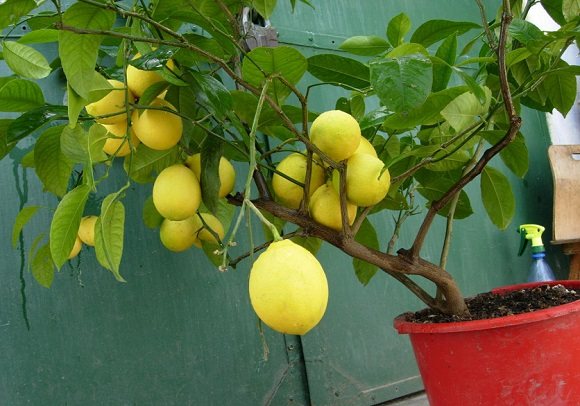

Pavlovsky harvest
To work you need a set of tools:
- secateurs;
- grafting knife (if available);
- small tape;
- garden pitch;
- wet natural fabric (possibly cotton);
- film;
- alcohol.
Before carrying out work, the instruments are disinfected, hands are thoroughly washed. These measures help prevent infection from entering the incision site.
There are more than 10 methods of plant grafting. Suitable for indoor shrubs are:
- budding;
- splitting method;
- copulation.
Each of these techniques has its own advantages and disadvantages, and is distinguished by its methodological originality.
Budding lemon tree
Often, improper budding (grafting by the kidney) leads to stem deformation and a delay in the development of the seedling. In this regard, more experienced gardeners practice grafting for the bark.
Step by step guide:
- The trunk at a height of 5-6 cm from the base is wiped with an alcoholic or antiseptic solution.
- In the selected area, a T-shaped incision is made in the size of 1: 2.5 cm. The horizontal incision is made first, the second is made down from its center. The edges of the bark are folded back with a knife.
- A bud with a section of bark under it is cut from the mother tree.
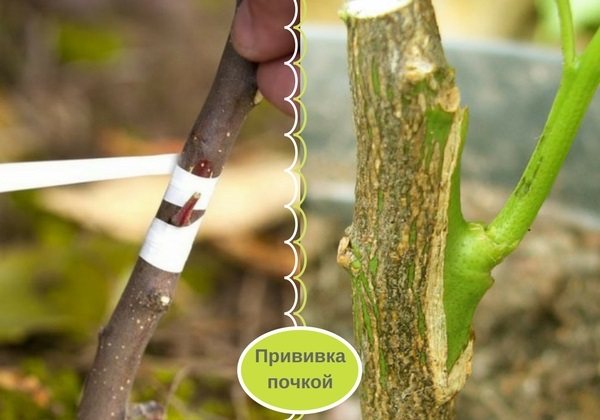

Citrus budding - The peephole is inserted into the rootstock incision and fixed in such a way that it fits snugly against the wood.
- A cloth bandage is applied on top. The winding is done from top to bottom to keep the kidney open.
It will take at least 3 weeks for the eye to heal. After the expiration of the established period, the bandage is removed, and the cut site is treated with garden varnish as needed. The crown of the seedling, located 6 mm above the grafted bud, is cut off.
An analogue of budding is grafting on the bark. The difference in the methods is that in the second case, not a kidney is inserted into the incision, but a shoot of a fruiting citrus.
Budding is carried out during active sap flow.
In this case, the bark can be easily separated from the wood. For better sap flow, the seedling is watered abundantly a few days before work.
Inoculation by cuttings (split)
Almost any tree can be successfully grafted with a cuttings. A mother shoot with a diameter less than the thickness of the rootstock is suitable for the procedure. In most cases, the method is in demand among flower growers who grow a lemon tree from a stone.
To vaccinate lemon at home, gardeners follow the instructions:
- The seedling and the scion are disinfected.
- The stock is cut to 5 cm above the soil level. An incision is made on the trunk with a depth of 2 cm.
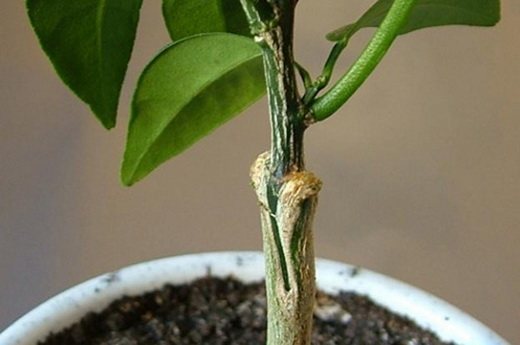

Into the cleft - Choose which branch to cut for grafting. The handle is sharpened under a wedge or a sharp cut is made on it. Up to 2 cuttings can be grafted into the split at the same time.
- The workpieces are installed in the split and fixed with tape, gauze, insulation.
- The stump is poured with garden pitch.
Sapling copulation
Copulation differs from cuttings by the method of engraftment of the cuttings to the daughter seedling. The graft and rootstock should be of the same diameter, and their slices should fit snugly together.
Step-by-step instruction:
- A crown is cut from the shoot chosen for grafting with a disinfected secateurs. A healthy stalk no more than 5 cm long is removed from the mother tree. It will take root faster if it is previously kept for 2-4 hours in a 5% sugar solution.
- Identical oblique cuts and vertical recessed cuts are made on the scion and rootstock.
- The stalk is tightly applied to the trunk in such a way that the incisions coincide. The plot is wrapped with garden or insulating tape.
After 3 weeks, the "tire" is removed, excess growth and side shoots are removed from the tree. If the vaccination is unsuccessful, the procedure can be repeated. You don't have to wait a month for this.
Video with a method for copulating a non-rooted cutting.
How to tell if a lemon is grafted?
The first signs that the operation was successful appear after 7 days. If the foliage on the petiole is easily detached from the stem, gardeners will loosen the tourniquet. Darkened petioles are a sign of a failed operation.A dried, dark bud is also a signal that the tree needs to be re-grafted.
Some connoisseurs of home greenery prefer to purchase a ready-made seedling, rather than growing a seedling from seeds. Bushes offered in specialized stores can be grafted in advance. In this case, repeated operation may negatively affect the condition of the plant. To determine grafting, the trunk is inspected for deformations. Pineal lumps on the bark indicate that the citrus will bear fruit. If the stem is smooth and free of build-ups, the owner chooses a suitable time to plant the lemon.
Terms of vaccination and subsequent care of the plant
The periods of the beginning (April) and the end (August) of the growing season are considered a favorable time for the procedure. A bud or stalk takes root on the trunk for no more than 3 weeks. The first signs of a successful operation are noticeable after a week.
Vaccination of lemon at home subsequently requires special care for the plant:
- All shoots are removed on the scion cuttings. The processed lemon is covered with a glass or plastic dome, a transparent plastic bag. It is important to create greenhouse conditions.


First bloom - The plant is ventilated in the open air 2 times a day for 2-3 minutes. At 2 weeks, the time begins to gradually increase.
- To enhance the greenhouse effect, moistened cotton wool is placed under the dome.
- During the healing period of the bark, the tree needs abundant watering. Gardeners recommend preventing the soil from drying out.
- Over time, a young shoot will appear at the cut site. After a month, it is removed, at this point the tree is considered grafted.
How to grow lemon from seed effortlessly
Many people are interested in the process of sprouting a lemon from a seed. Everything is very simple. Lemon in hot tea is exposed to special temperature influences, coincidentally coinciding with the ideal for germination.
Therefore, seeds that are simply spit out of tea into well-prepared, moist soil have an excellent chance of success. It is better to weed out excess sprouts immediately, do not touch the bone at the top of the sprout, do not cut it off and do not try to help the new plant in any way. Just provide good watering, lighting and feeding.
How to choose the right stock
To know exactly how to plant a homemade lemon, you should first figure out how to choose a stock. In general, the problem of matching the rootstock to the scion is traditionally considered one of the most important, and the rootstock is called the "foundation" of the whole tree. This is also true for lemon.
Often, for citrus fruits, a tripolyata is used as a rootstock, otherwise the three-leaf poncirus (Poncirus trifoliata) is a plant that has little in common with lemon, belonging to the same family, Rutaceae, but to a different genus, Poncirus. Moreover, it is deciduous, not evergreen.
Trifoliate seedlings brought from southern areas, intended exclusively for the open ground of the subtropics, attract with an alluring view of their crowns - powerful branches, many leaves. However, in the fall, the tripoliata sheds its lush crown, preparing for a deep winter sleep, which is important for the conditions of the subtropics, where weak January frosts sometimes take place. In order for lemons grafted on trifoliate to grow well, they need to provide cold conditions - a temperature of 4-6 ° C above zero, which an amateur citrus plant is unlikely to want to do at home.
Also, grapefruit, lemon or orange seedlings are often used for grafting. These options are especially good for beginners. The only problem is the extreme overgrowth of trees over time. To solve it, it is recommended to use a dwarf rootstock, which allows you to reduce the size of the trees.
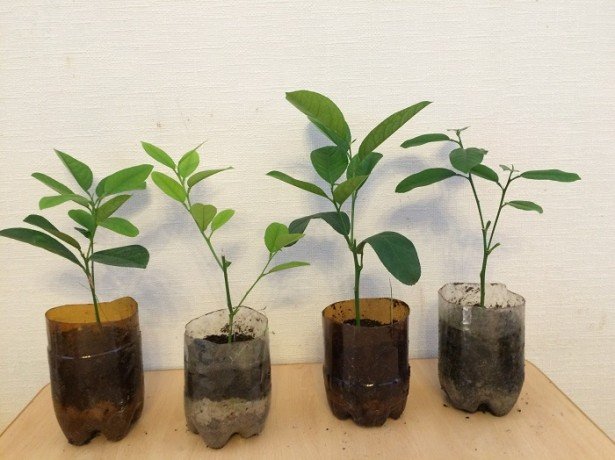

In the photo, lemon seedlings
The dwarf rootstock for citruses is often the bigaradia, or orange, from the same genus as the lemon.True, some difficulties are caused by the reproduction of this plant - the percentage of rooting of cuttings is small. In addition, there are few seeds in the fruit, which causes some problems when trying to grow a rootstock from a seed. Nevertheless, growing bigaradia is somehow quite possible.
There is another way to prepare a dwarf rootstock for a lemon - any wild seedlings or ordinary grafted or rooted seedlings will do. It is only necessary to carry out a somewhat risky, neat operation on them, which is sometimes done for the same purpose at the garden apple tree. On the stem of a young plant, 8-13 cm above the root collar, a 13-15 mm wide bark ring is carefully removed, making one longitudinal and two transverse annular cuts of the bark with the help of a sharp budding knife, then immediately put in the same place, but already in reverse side, top down. This is usually done in the spring with active sap flow. The place of operation is tied with plastic wrap.
This procedure slows down the outflow of nutrients, therefore, the growth of the crown of the tree is reduced. However, as new tissues grow, "dwarfism" gradually disappears, so the operation must be repeated once every 5-7 years, at least as long as the cortex remains elastic.
One more small but very important fact should be noted about the selection of the scion - that part of the plant, which, in fact, is grafted onto the rootstock. The graft must necessarily be taken from a fruit-bearing tree, otherwise after grafting there is no need to wait for the harvest.
What to do if it doesn't take root?


You can understand that the vaccine has not taken root in 2-3 weeks after it is carried out. The graft may not take root if the stalk was cut from a diseased tree or the stock was infected. It may also be that the procedure was carried out after the start of sap flow.
If the kidney is dormant or "reserve" on the handle, then it will take much more time for it to take root, therefore, before despairing, you need to wait several months without removing the greenhouse from the tree.
It also happens that the kidney can "sleep" not even for months, but for years. There is no explanation for this phenomenon. In this case, you can wait until she wakes up. Or repeat the procedure. To make the kidney wake up faster, it can be treated with Zircon, Amulet or Cytokinin preparations.
During the procedure, you must always do several vaccinations, use high-quality and healthy material, the instruments are disinfected before inoculation.
Lemon grafting with cuttings
As in the previous case, the grafting is done at a height of 5 to 10 cm from the surface of the soil, but only this time the stem of the lemon tree is not cut, but completely removed. From a horizontal even cut down the bark, an incision is made up to one and a half centimeters long.
This is the place for the engraftment of the scion cuttings - the apical part of the shoot with 2-3 nodes and fully formed strong buds. The stalk is cut obliquely so that the length of the cut is equal to the length of the bark notch on the stock. Before planting a lemon, remove all the leaves from the cutting, leaving their cuttings. Then the bark on the stock is taken away from the place of the vertical cut and the scion is put into it, tightly and evenly pressing it to the wood. The bark is returned to its place, the rootstock stump is smeared with garden varnish, and the place where the lemon is grafted is tightly bandaged.
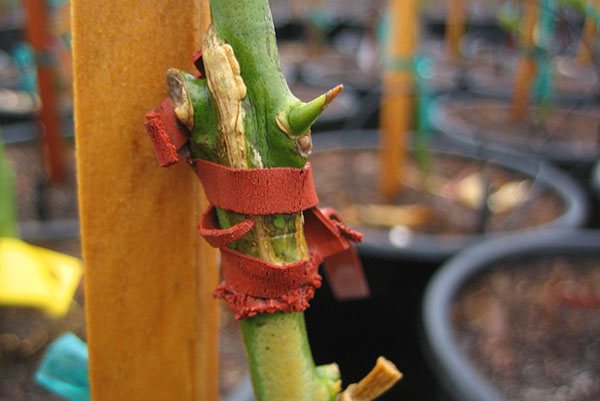

As in the previous case, after grafting, the plant is placed in greenhouse conditions until the result of the work performed becomes obvious. All the nuances of copulating are discussed in the video on how to plant a lemon at home.
The advantage of this method of grafting lemon can be considered a greater number of buds, which, after successful engraftment, will grow. If the citrus grower fails, the entire rootstock can be lost.
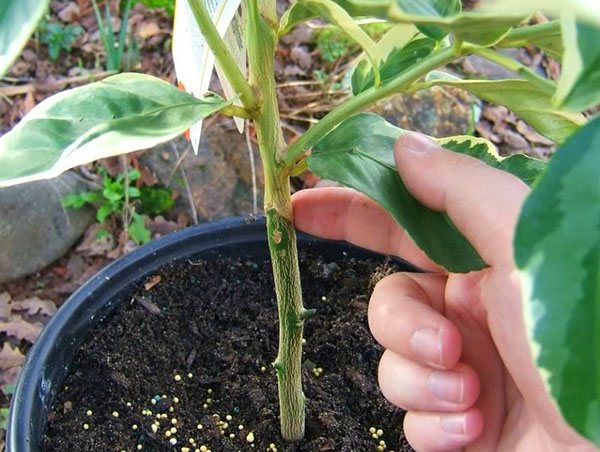

Drying cuttings directly on the stem indicates failure, but if they turn yellow and fall off, you can expect quick acclimatization and growth of the scion.
[collapse]
Useful properties of indoor lemon and its uses
It is necessary to carry out the procedure for inoculating a lemon using sharp, and most importantly, clean instruments. The rootstock and the cut on the stem of the lemon tree should be wiped with a damp cloth to prevent dirt from entering. Also, in the future, you may find that shoots begin to form on the stock and they must be removed in order. After all, shoots lead to the death of the vaccine, therefore, interfere with the achievement of the results that you expect.
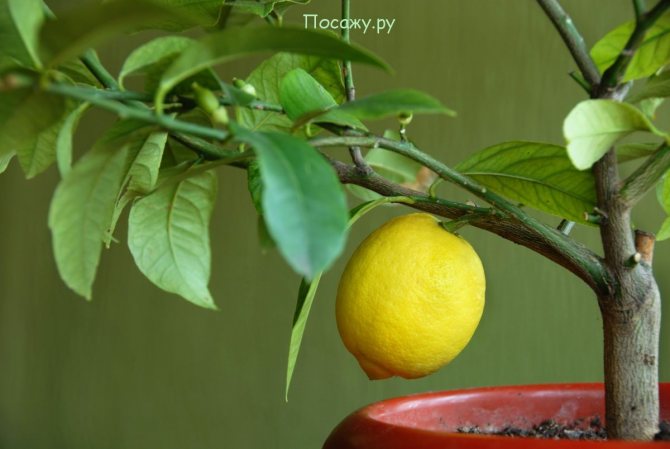

The birthplace of this tree can be called India, China and the Pacific tropics. Lemon is not found in the wild. It is easy to cross, and many citrus hybrids are popular.
A lemon in indoor conditions can live for more than 30 years, and with age, the number of fruits only increases.
If you know how to plant lemon at home, then this business can be profitable. Homemade fruits are healthier than imported ones, since imported ones are picked not yet ripe.
Compared to outdoor-grown lemon shrubs, indoor lemons have thinner skin and fewer seeds. There is no particular difference in taste.
Despite the fact that you can buy lemons on the market all year round, many people prefer to grow it at home because of its invigorating citrus scent. It is believed that the smell of lemon is alarming, but this has not been scientifically confirmed. Citrus growers say that they quickly get used to this smell and then it is difficult to imagine a house without a lemon scent.
There is a legend according to which one of the Caucasian kings imprisoned his servant for disfavor and ordered him to be fed only one type of food. Which one, the servant could choose for himself. And he chose lemons. When the guards asked why it was a lemon, he replied that their juice can quench thirst, that the beneficial properties of the peel and seeds support the work of the heart, the citrus aroma will cheer him up, and the pulp will serve as food. Now it is difficult to believe that a person is able to eat only lemons, but the legend is designed to show how useful and universal these fruits are.
Indoor lemons are unpretentious in maintenance, but this does not mean that watering from the tap is all that is required. This plant has its own characteristics that must be considered if you want the shrub to bear fruit regularly.
Lemon, like any plant, loves light, but not direct sunlight. In winter, you can additionally illuminate it with artificial light sources, so that daylight hours have a duration of at least 10 hours.
Air humidity should be over 60%.
In winter, when the batteries are running at full capacity, the air in the room is dry, the humidity drops to 40%. If you have a humidifier that you use regularly, this is not a problem. But in the absence of such a lemon should be sprinkled with water.
The use of lemon in cooking has long been known. Lemon juice is sprinkled on meat before cooking, added to salads, pie fillings, ice cream, cocktails. They even descale pots and kettles with it.Therefore, it is so beneficial to always have your own source of these citrus fruits on hand.
Lemons are packed with nutrients, including vitamins C, A, D, and B.
To maintain health and strengthen immunity, especially in the cold season, it is useful to drink citrus water. It is very easy to prepare it. It is enough to take a container with a volume of 2 liters, lemon, orange and grapefruit. Wash everything well, cut into circles with a peel. Place the slices in a container, crush slightly so that the juice stands out. Put a few ice cubes on top, pour a small amount of purified water.
More information can be found in the video.
When is the best time to vaccinate a houseplant?
Grafting is the process of moving buds or shoots from one crop to another in order to grow together. Spring is considered the optimal time for the procedure.
Grafting a homemade lemon tree is necessary in order for it to begin bearing fruit faster. Even on the branches, varietal fruits will ripen, which will be of high quality, and not hybrid without transferring their properties to "descendants", as in the case of growing from seeds. It is possible to plant indoor lemon on a cultivated orange or other citrus plant.
Inoculation by cuttings
For grafting citrus crops, the following options are used:
- Cuttings. It is used in the spring or summer. It is carried out by children with one or another set of leaves. There are two options for grafting - "for the bark" and "in the split".
- Budding. It is the most common technique. Held in April or May. Assumes the use of a single bud with a thin woody covering. It is selected from the cutting of a cultivated plant. The peephole is inserted into the bark of the rootstock.
- Copulation. It involves the use of a rootstock and a grafted shoot of the same thickness. Distinguish between simple and improved versions of such a connection.
About a month before the vaccination, check the state of the root system. Change the substrate if necessary.
Before grafting lemon at home, decide on the most appropriate procedure. There are several of them:
- budding is the safest and most affordable way. Be sure to do this procedure in high humidity conditions - otherwise the kidney may dry out and not take root. The place for grafting is chosen in such a way that it is located on the most even section of the trunk and not lower than 10 cm from the soil surface. The boundary values for the cut are as follows: horizontally, it should not be more than 1 cm, vertically - no more than 3 cm. After a few weeks, it is already possible to determine whether the cuttings have taken root - if they have not dried up, then everything is in order;
- stalk. Homemade pitted lemon can be grafted differently. In this case, you need to use a well-developed cutting from a fruiting tree. In the rootstock, a split is made about 3 cm deep, into which the cuttings are inserted. It is important that the edges of the bark of both plants match up - then the chances of a favorable outcome will increase.
In this video, you will learn how to properly plant citrus fruits at home.
The best time to inoculate a lemon is April - June. A rainy or cloudy day should be chosen, as high humidity will improve rootstock survival. You can create such an environment artificially indoors.
For high-quality grafting, active sap flow of the plant is necessary. Some gardeners plant citrus fruits throughout the summer.
How to get vaccinated?
There are two ways to graft a citrus tree:
Lemon seed planting rules
Practice shows that in order to obtain a full-fledged fruiting tree at home, lemon seeds must be pretreated with preparations that stimulate the growth of seedlings and help strengthen the root system of the tree.
- The bones are placed in a solution of Sakhalin sodium humate for 8-10 hours, the concentration of which is determined by color (it should resemble beer or be slightly lighter).
- Seed treatment with Epin-Extra and Zircon preparations (1 drop per 200–250 ml). This is necessary so that the lemon grows with maximum intensity, and its resistance to dry air and lack of light in the room is the greatest.
The seeds should be planted in a pre-moistened and well-loosened soil - to a depth not exceeding 3 cm (preferably 1.5–2 cm). The distance between the seeds should be about 5 cm, and the distance from the walls of the container to the planted seeds should be 2.5–3 cm.
- Cover the pots with plastic wrap, a glass jar, or a cut-off neck from a plastic bottle. The greenhouse microclimate created in this way will noticeably accelerate the emergence of sprouts.
- The temperature required for germination should not fall below 18 ° C. Ignoring this recommendation, the citrus grower runs the risk of getting weakened shoots.
- After sowing, the lemon is sprayed with a spray bottle only in situations where the soil becomes dry. Excess moisture is one of the most dangerous enemies of lemon, contributing to the development of mold and leading to oxygen starvation of the plant.
By following these tips, a citrus grower can expect to sprout in as little as 3 weeks.
As soon as the planted lemon seeds sprout, the film, jar or bottleneck that covered the containers must be removed. The pots are placed in a well-lit area, but direct sunlight should not constantly fall on the tree.
After 4 months from the moment the sprouts appear, they are transplanted into larger pots along with an earthen clod, adding vermicompost to the soil, which contributes to the accelerated development of plants.
Since that time, the citrus grower selects seedlings that will be more profitable to grow for further fruiting. The selection is carried out according to the following criteria:
- the minimum distance between the buds on the stems;
- a large number of leaves;
- moderate number of short needles or their complete absence;
- the minimum number of thin and weak shoots.
If two stems grow from a lemon seed at once, then it is more rational to leave a stronger one.
Watering a young plant is quite simple:
- Maintain moderate soil moisture, avoiding excessive watering and drying out of the earthy coma.
- Water for irrigation should be settled or rainwater, and its temperature should be warm.
- With the onset of the cold season, it is reasonable to reduce the frequency of the procedure under consideration by 1.5–2 times.
- Spray the leaves of the growing tree weekly, pre-cleaning them from dust.
It is advisable to place citrus away from radiators and other heating devices. If it is impossible to rearrange the pot to another place, then additional air humidification is required.
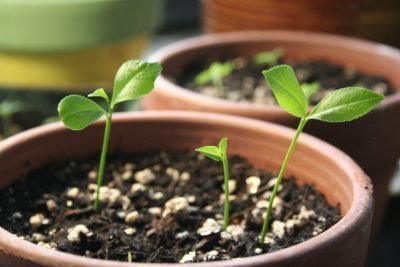

It is advisable to place the lemon away from heating appliances.
If you are wondering whether a lemon tree grown from a seed will bear fruit, follow the recommendations, accounting for which will allow you to answer in the affirmative:
- The optimal daylight hours for all citrus plants is 12 hours. In winter, the tree needs to be additionally illuminated using phytolamps.
- Air humidity for lemon should not fall below 60%.
- If the tree is suffering from infections or pests, then measures should be taken immediately. By themselves, they do not go away, and therefore ignoring the problem can lead to the death of the plant.
The hardiness of any fruit-bearing tree grown from seed is much greater than that of a store-bought plant.
The advantages and disadvantages of this breeding method
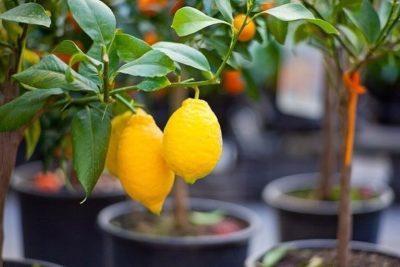

The main positive effect of grafting is the fruiting rate of the tree. For vaccination, you can use any of the known methods, but some of them will not allow you to make a second attempt. For example, a graft that has not taken root in the split will render the stock unusable and will have to be grown again.
For some, the search for a high-quality rootstock can cause certain difficulties, because not everyone has oranges and lemons at home. It should be noted that self-grown lemon at home will be an environmentally friendly product, which you can eat without fear for your health.
What materials will be needed
Planting homemade lemon is easy if you have all the necessary tools:
- a sharp or special knife designed for budding;
- garden knife:
- polyethylene tape;
- secateurs (in case you need to cut thick branches);
- garden var (can be replaced with drying oil);
- a plastic bag or bag (to create a miniature greenhouse);
- ordinary non-sterile cotton wool.
And, of course, the rootstock itself, with which you will plant the lemon tree.
How to care for a lemon tree at first?
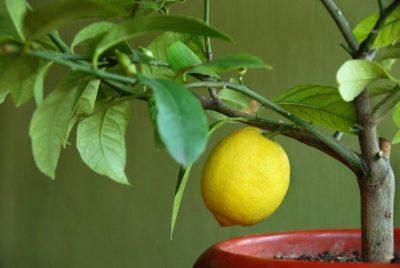

There are some peculiarities of the technique of looking after the lemon after the vaccination.:
- compulsory airing and spraying of the plant, every 2 days: first open, hold the lemon in the air for a few minutes, then spray and close again;
- the lemon should be warm, but not in the sun;
- fertilizers should be postponed for 3 months;
- it is better to cover the plant with a large plastic container, drowning it a little into the ground, so the effect of a bath will turn out, which will help the graft to take root better;
- after the appearance of the escape, continue all procedures;
- if a flower grows instead of a leaf, then it must be removed;
- all shoots below the graft must be removed;
- after a month, remove the bandage, but continue to cover the plant;
- after 1.5-2 months, when the vaccination gets stronger, you can remove the bath for a longer time, in 7 days you should completely open the lemon and leave it without shelter.
If the leaves of the plant turn yellow after opening, then it is too early, you should urgently spray the plant and cover again.
Grafting by cuttings: copulation and splitting
Grafting with a cuttings is the simplest way of vegetative propagation of lemons. Grafting with a graft is simple and within the power of a novice gardener. The hardest part about copulating is finding the right scion - a healthy indoor lemon of the right variety.
Copulation stalk - twig length with or without leaves. Leaves can be cut as needed, leaving the stalks under the buds. Before grafting, cut lemon cuttings can be wrapped in a damp cloth and placed in a plastic bag. To prevent the cloth from drying out, it is best to store the bag in a cool place.
There are several ways of grafting with a cuttings.
Cleavage grafting
Cleavage grafting - the easiest way to graft by cutting. The method is used when the rootstock (seedling) and the scion (cutting) are of the same thickness or the rootstock is slightly thicker than the scion.
Cut the rootstock at a height from the soil surface with a sharp knife and split it in the middle to a depth
Graft, stalk with insert into the cleft like a wedge. To make the stalk wedge-shaped, make sharp oblique cuts on it with a length
When inserting the cutting, align the cambial layers as closely as possible. It is very important. That is why the rootstock and the scion must have the same stem diameter.
If the rootstock is thicker than the cutting, match the bark of the rootstock and the scion on one side. If the size of the stock allows, then not one, but two cuttings of different varieties can be grafted into the split made.
From above, apply a polyethylene bandage to the vaccination site; and on top of it is a garden pitch or plasticine.
Copulation (grafting into the butt)
Copulation - used when the rootstock trunk and the grafted stalk are of the same thickness. The same thickness allows you to achieve good contact between the cambial layers of the rootstock and the scion - they are exactly aligned in the same cuts. Therefore, copulation is sometimes called butt grafting.
The stalk and stock are easier to combine if the cuts are not round, but oblique, in times more than the thickness of the stem of the seedling (cutting). For the convenience of copulation, a copulation template is made.
When copulating, it is difficult to tie the combined cuts, even with a small offset of the cuts and a weak tying, the rootstock and scion tissue will not grow together.
Improved copulation - copulation in the split - allows you to combine the cambial layers of the rootstock and scion and simplify the strapping. In the case of improved copulation on oblique cuts of the cutting and stem, additional longitudinal splits are made with the length and the cutting is planted on the stock so that one longitudinal split goes over the other.
Bark grafting - another option for grafting with a graft, in which the thickness of the seedling grafted in this way should be at least 5 mm, that is, it is much thicker than the scion grafting.
Popular indoor lemon varieties
It is best to plant the following varieties in an apartment:
- Pavlovsky. A very tall and beautiful tree. It often reaches 2 m in height. The fruits have a sweetish taste, and their weight can reach 400 - 450 g.
- Meyer's lemon. A hybrid obtained by crossing with a grapefruit. Doesn't take up much space on the balcony or in the room. One plant can produce up to 2 kg of fruit per season. Each citrus weighs 150 g.
- Ponderosa. It is known for its bitter fruit taste and a lot of seeds. Such a tree is very beautiful, since it blooms most of the season.
- Genoa. It is unpretentious in care, therefore it is often grown by novice gardeners. Fruiting in the 5th year of life, and blooms in the second year.
- Anniversary. One of the highest yielding varieties. Its fruits have a thick rind.
Features and conditions of vaccination
Growing lemon at home is a very simple process. This requires high-quality planting material, a container with soil and good crop care. Compliance with all the conditions necessary for growth will make it possible to grow a beautiful citrus tree with strong fleshy leaves. It will probably begin to bear fruit in at least seven years.
You can get useful fruits much faster if you plant a culture by choosing the right option. This procedure will allow you to get the first harvest in three years. Some lemons can produce fruit in the first year after grafting.
Grafting is the movement of shoots or buds from one selected plant to another for complete accretion. This action must be performed one year after planting, when a strong green trunk will sprout from the seed.
The best time to transplant buds or shoots is mid-spring.At this time, the plant has a moment of increasing the activity of the milestones of the processes necessary for life. If necessary, you can plant lemon at home in August.
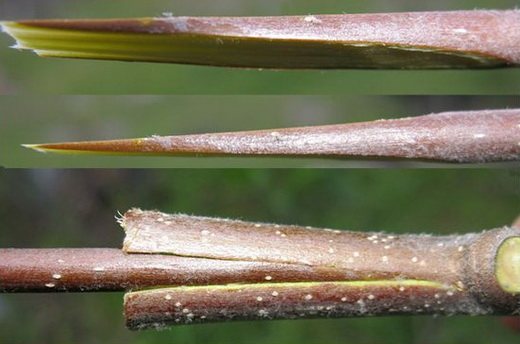

How the lemon tree is grafted
How to make lemon bear fruit?
Grafting is one of the methods to increase the fruiting tendency of lemon. A citrus grown from a seed is unlikely to bear good fruit on its own, so it should be grafted with a cutting of a fruiting plant.
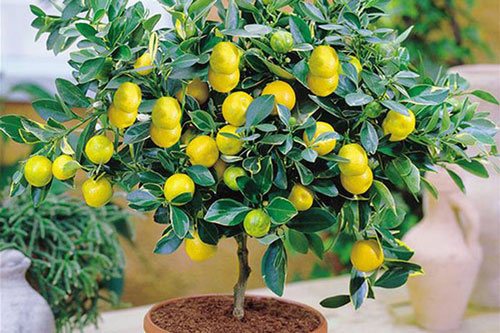

Note! It so happens that the lemon blooms, but the fruit does not appear. There may be several reasons, they are all associated with a violation of plant care.
The procedure for accelerating the fruiting of lemon consists of several options:
| Crown formation | Vertical shoots will be directed towards intensive growth, and horizontal ones - towards fruiting. Therefore, it is better to bend new arrows on purpose. |
| Padding | They pull the branch with copper wire so that the vegetation slows down |
| Banding | Performed during active sap flow by cutting off the rings of the bark |
| Cold wintering | Lowering the temperature by 2-5 degrees |
| Fertilizers | Better to use phosphorus-based formulations |
Compliance with all these recommendations will help make a beautiful citrus plant with fragrant flowers and lemons from a tree that does not bear fruit.
Useful video
Share the entry
- Similar posts
- What Indian, Russian or teen movie to watch when you feel like crying?
- Explanation and meaning of symbols on clothes for washing
- Encouraging motivators with meaning for men and women, plus wise work phrases and quotes
- How to respond to insults, how to morally humiliate a person with clever words on the Internet and life?
- Cocoa butter: characteristics, properties and application in cosmetology, cooking and medicine
- Growing and caring for coleus: description and types of plants
Why isn't the lemon blooming?
Once engrafted, the citrus should bloom next season. The buds are formed in the spring at temperatures from + 15 ° C. Flowering plants are cross-pollinated. To do this, use a small brush. With its help, pollen from one flower is shaken off to another.
Lack of ovaries is not always a sign of poor vaccination performance. In this case, the owners begin to be tormented by doubts about why the lemon refuses to bloom. There are several environmental factors that can negatively affect bud formation. These include:
- low room temperature;
- insufficient lighting;
- low acid soil;
- traumatic pruning;
- unbalanced feeding.
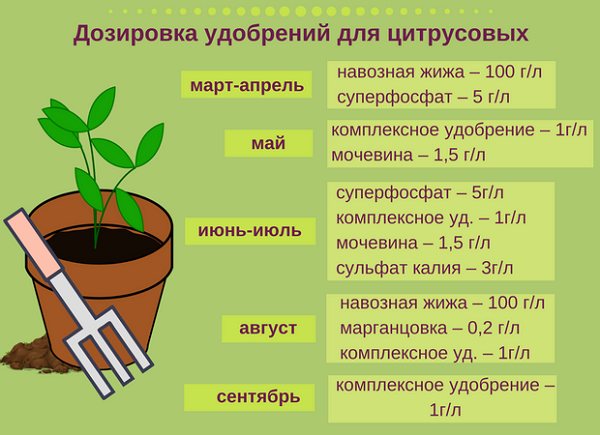

Approximate options for applying dressings
Experienced growers recommend mulching the soil in a flower pot with rotted manure or humus in order to further nourish the tree and reduce moisture evaporation. With strong shoot growth and poor flowering, it is required to temporarily increase the application of phosphorus and reduce the amount of nitrogen. Then lemons will appear soon.
If you provide a tree with enough light, warmth and nutrients, it will definitely bloom. The ovary and fruit ripening last for 9 months, i.e. from May to November. After the specified period, the fruits can be eaten.
It takes a very long time to wait for ovaries to appear on the lemon grown from the seed, and the fruit-bearing trees sold are capricious and difficult to acclimatize. A video telling how to plant a lemon at home is a good help for indoor plant lovers who do not like to wait and want to enjoy the fruits from their windowsill in the near future.
Features of the procedure
Vaccination methods are not difficult to carry out at home, due to their simplicity and availability. The technology of the procedure assumes that:
- manipulations will be carried out in a short period of time in order to avoid the onset of the process of oxidation of plant tissues under the influence of air,
- in the process, disinfected equipment will be used to avoid bacterial and fungal infections entering plant tissues,
- the scion and rootstock cuts will be smooth,
- grafting sites on the stock will be pre-washed with soapy water and treated with a fungicidal agent.
The optimal time for grafting at home is May; when the procedure is carried out in an unheated greenhouse, this period is shifted to June. It is recommended to carry out the grafting procedure in a humid room, and when growing citrus fruits in a greenhouse - in rainy weather, since high humidity contributes to the effectiveness of its result, preventing the grafting site from drying out.
For the grafted citrus during subsequent care after the procedure, a mini-greenhouse is created. Shelters with polyethylene or covering with a glass jar are suitable for him.
Step-by-step instructions for the procedure at home
There are many different ways to vaccinate lemon, all of which have their own advantages and disadvantages. It is important to understand the nuances of each procedure and choose the most optimal one for yourself.
Copulation method
This method of grafting lemon is convenient with the same diameter of the stem of the motherboard and the scion. Due to this, growth and deformation of the trunk are not formed during fusion. To perform this operation, you must:
- Pick up the same thickness rootstock and lemon graft.
- On each of them, the same oblique cuts are made with a sharp knife.
- Attach the stalk to the stock with a cut and wrap it tightly with polyethylene, eliminating any lagging of parts from each other and good adhesion.
Slices with such an inoculation should clearly fall on top of each other. If you do not fasten the branch tightly, then the parts of the plant will not grow together. The bandage is removed only when the kidneys begin to come to life on the handle, which means that the vaccination was a success.
Budding method
Eye grafting or budding is fairly straightforward, but requires a firm hand and precise cuts in the bark of the mother tree. If the vaccination is performed in the spring or early summer, then an awakened kidney will do, but it is better to perform the operation in August with a sleeping one. To perform budding you will need:
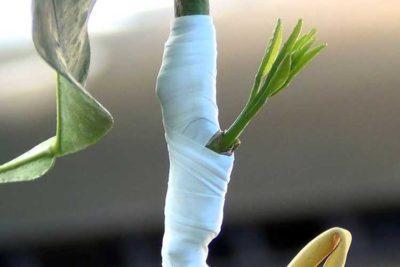

A peephole is cut off on a scion with a small supply of tissue up and down, with a total length of up to 3 cm. Part of the wood must be cut off together with the bud, the so-called "shield".- It is better to choose a place on the motherboard lower, to the first bud on the plant, make a T-shaped incision in the bark with a sharp instrument. The incision should be no more than 3 cm in length, and the horizontal incision should not be more than 1 cm. The incisions should only cut the bark without damaging the stem of the lemon.
- The cut peephole is inserted into the resulting incision on the stem of the lemon (rootstock), while the bark is gently pushed to the sides. Pressing the eye tightly will help to touch the cambial layers of the plants.
- After that, the vaccine is wrapped in a strong bandage. You can use a bandage, electrical tape, polyethylene. It is better to apply the electrical tape with a sticky layer outward, so the bark of the tree will not be damaged. At the same time, the kidney remains outside, the bandage is applied to the sides of it.
- After dressing, the kidney should be treated with garden varnish.
If budding is successful, then after a month you can remove the bandage. The upper part of the stock is cut, processed with garden varnish, for the possibility of developing a new bud.
The method of such a vaccination is quite simple, but failure will result in the fact that the motherboard will no longer grow. To inoculate a lemon into a split, you must do:
- The stock is trimmed, leaving about 10 cm from the ground.
- With a sharp knife, a vertical section of the trunk is made to a depth of 3 cm.
- The stalk should have up to 5 healthy buds, the bottom of the branch is cut like a wedge on both sides. The length of the slices should be no more than 3 cm.
- The twig is inserted into the cut in the tree. If the scion is smaller or larger in diameter than the rootstock, then it is necessary to align the joint along one edge.When the motherboard is large enough and the trunk allows, then two cuttings can be grafted at once.
- Everything is wrapped tightly with polyethylene, and on top it is covered with garden varnish or plasticine.
This method is considered quite easy and is suitable even for inexperienced gardeners.
Bark grafting can only be performed when the mother tree is significantly thicker than the scion. The operation is performed in the following way:
- The rootstock is shortened to its full length, leaving only 7 cm from the ground.
- On one side, a 3 cm vertical incision is made with a sharp knife.
- An oblique cut of the same length is made on the handle.
- The bark of the tree is folded back and the stalk is inserted with a cut into the tree under the bark. If the tree is thick enough, then several cuttings are grafted at once in this way.
- The vaccination site is wrapped in a strong bandage and smeared with garden varnish.
Below the grafting, you can wrap the tree with a damp cloth - this will improve the survival of the cutting. Wrapping this place with a package will create a mini greenhouse. If shoots appear below the grafting, then they should be removed, otherwise all the work will be in vain.
Cuttings
Let's take a closer look at how to plant indoor lemon using each of these methods.
- The budding method involves the following steps:
- thoroughly wipe the rootstock trunk with a damp cloth, cleaning it from possible contamination;
- a T-shaped incision is made on the stem of the stock, trying not to hook the core of the stem;
- a bud from a tree that has survived fruiting is inserted into the hole made;
- when the kidney is inserted, the place of operation is tightly fixed with plastic tape, and it is better to cover everything with garden pitch, leaving the edge of the cutting free.
- When grafting a lemon with a handle, do the following:
- both the seedling and the stalk are carefully wiped with a damp cloth;
- at a height of about 10 cm, the seedling is cut vertically, leaving a small stump;
- the trunk is split from above, making an incision to a depth of about 3 cm;
- cuttings are cut at an angle, as if sharpening them;
- the workpieces made in this way are inserted into the split made, and everything is fixed with polyethylene.
If you have been growing citrus fruits for a long time, the procedure will not take you much time and effort, the main thing is to carefully monitor the tree after the procedure.
Now you know how to plant a potted lemon so that it bears fruit. Good luck and good harvest!
Benefits of the procedure
It takes a long time to wait for ovaries to emerge from the lemon seeds, and the fruit-bearing crops sold make high demands on cultivation and are problematic to adapt to new conditions.
Not every gardener decides to plant a lemon tree. Beginners believe that it is forbidden to carry out such a procedure without certain skills. Indeed, vaccination should not be started if you do not know the basic processes, as well as if the material for inoculation or the instruments are not prepared. If all the rules have been followed, then a properly grafted plant will give the gardener many advantages:
- grafting helps to speed up the fruiting process of homemade lemon;
- on the branches of the plant, high-quality varietal fruits are tied and ripen, the properties of which are predetermined, which is especially appreciated because of the many hybrids that do not transfer their individual characteristics to new plants grown from seeds;
- Lemon is allowed to be grafted onto a home-grown orange or any other citrus crop.
